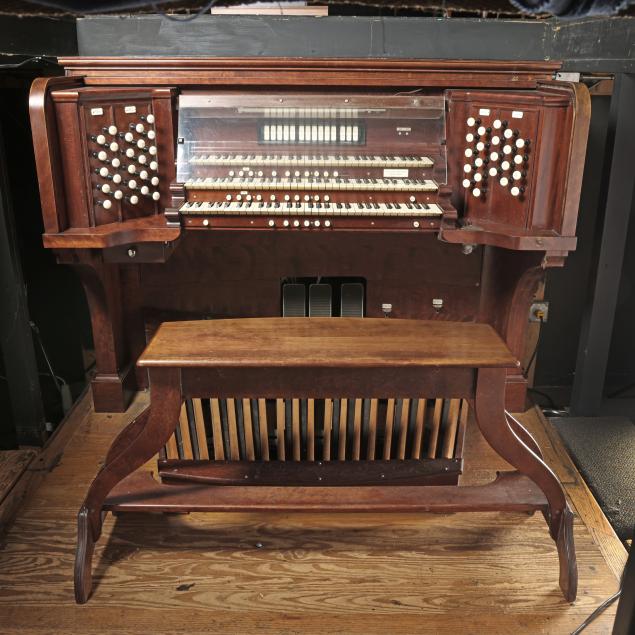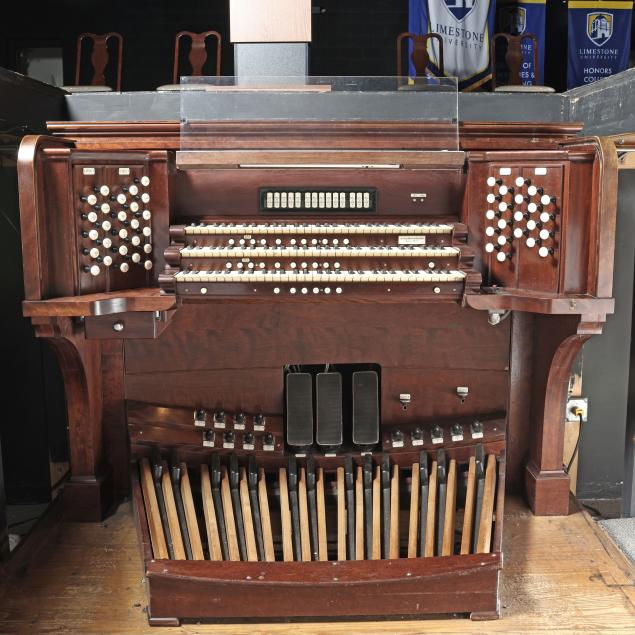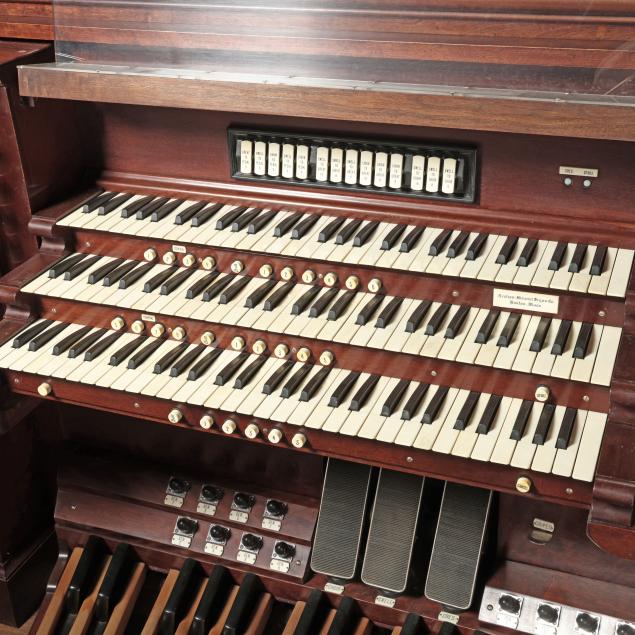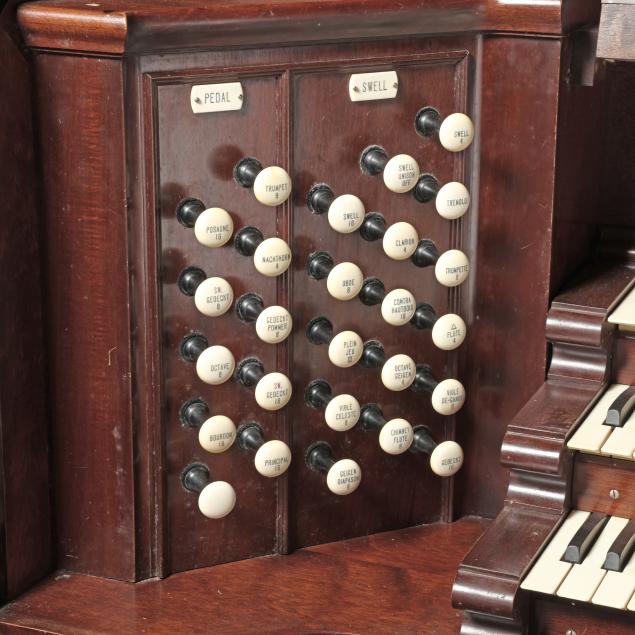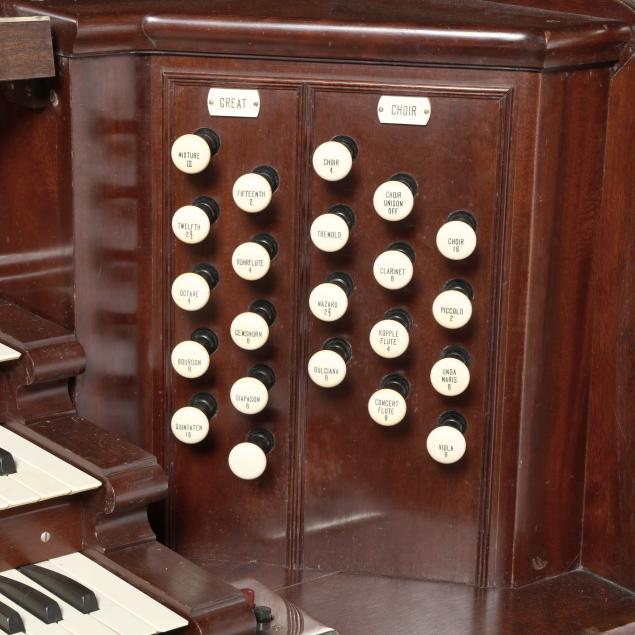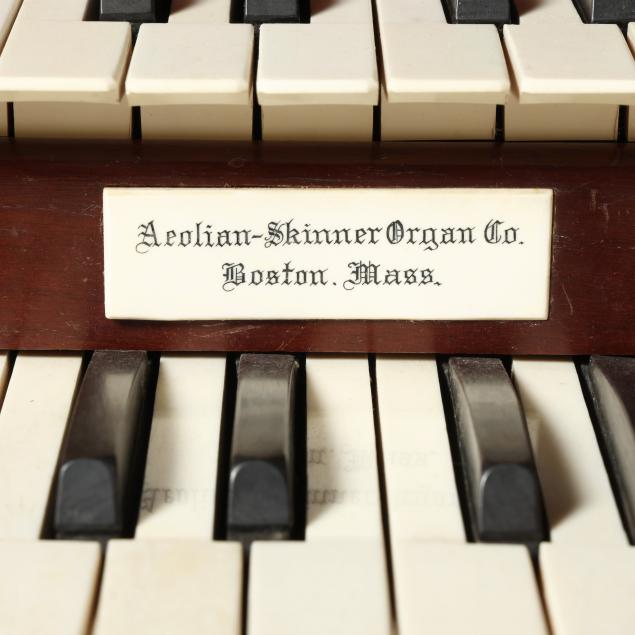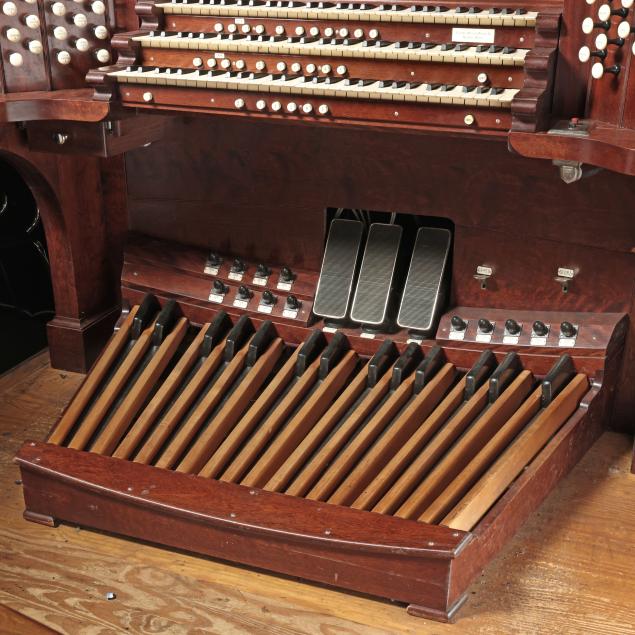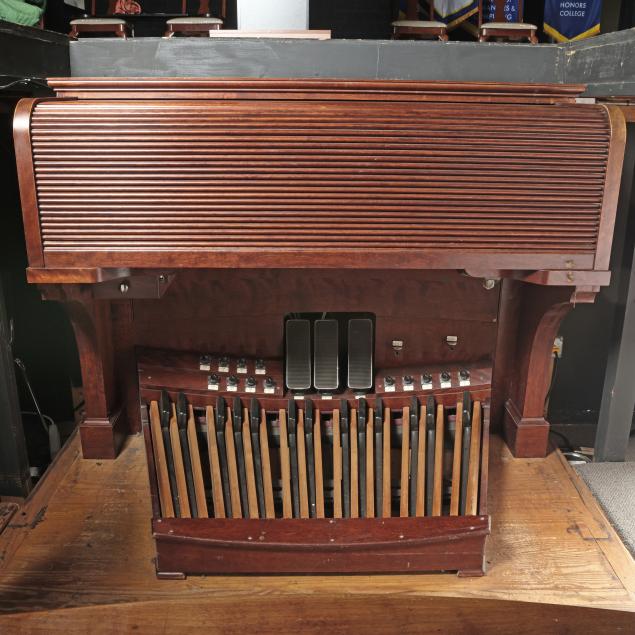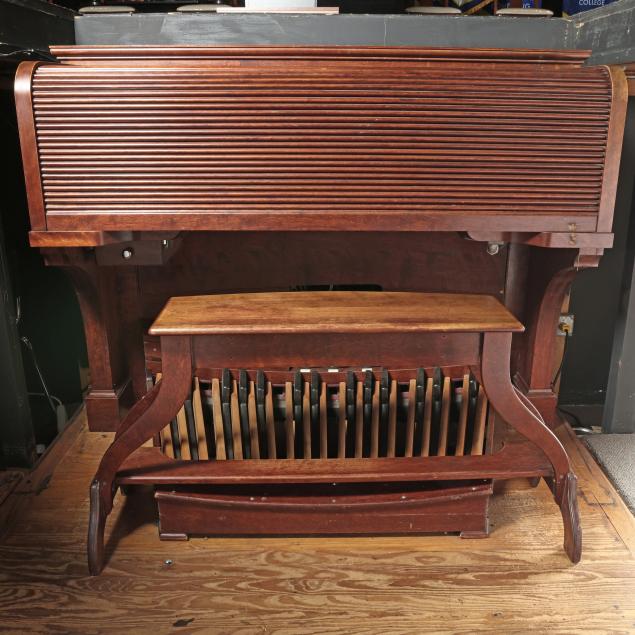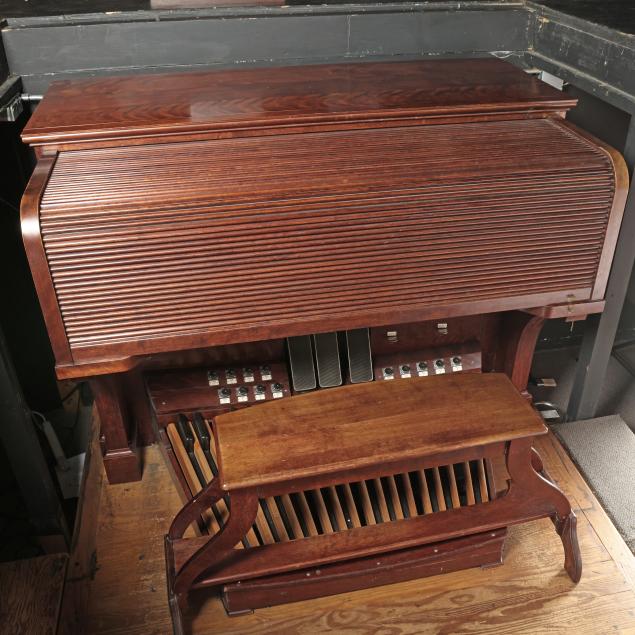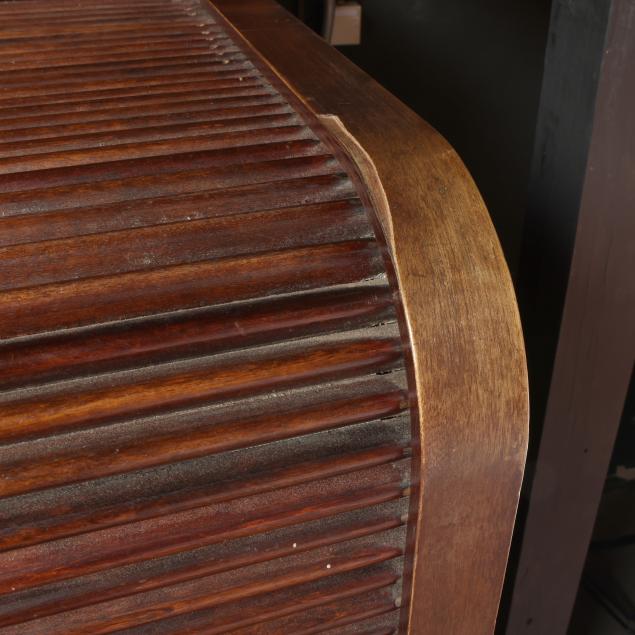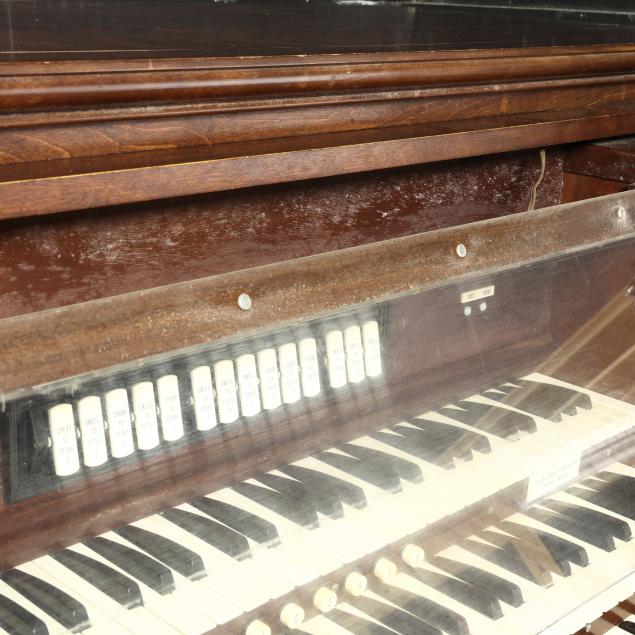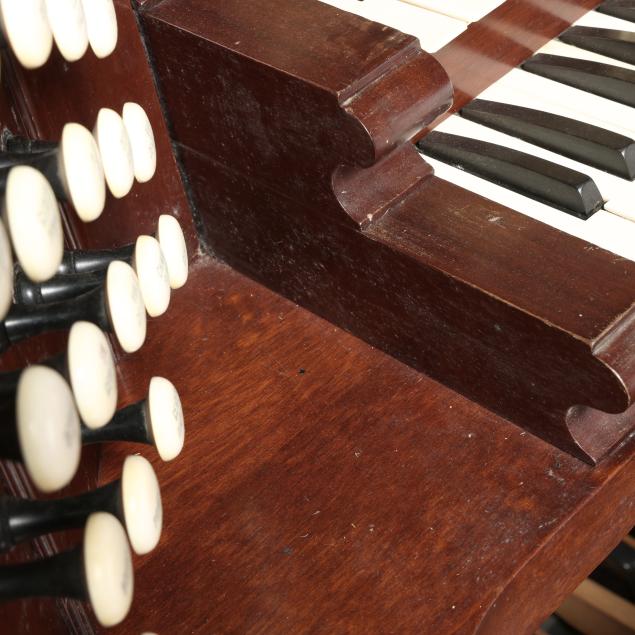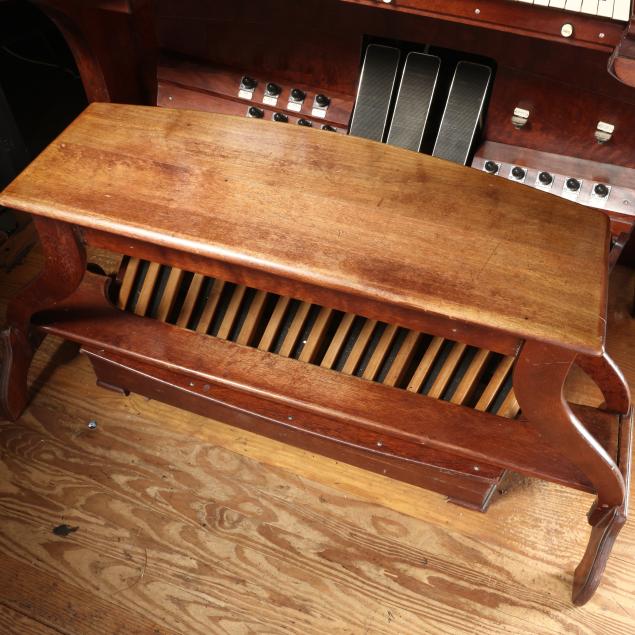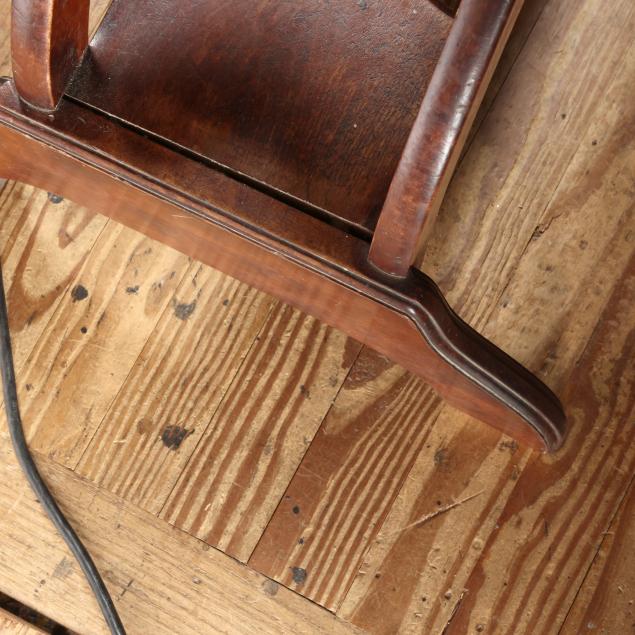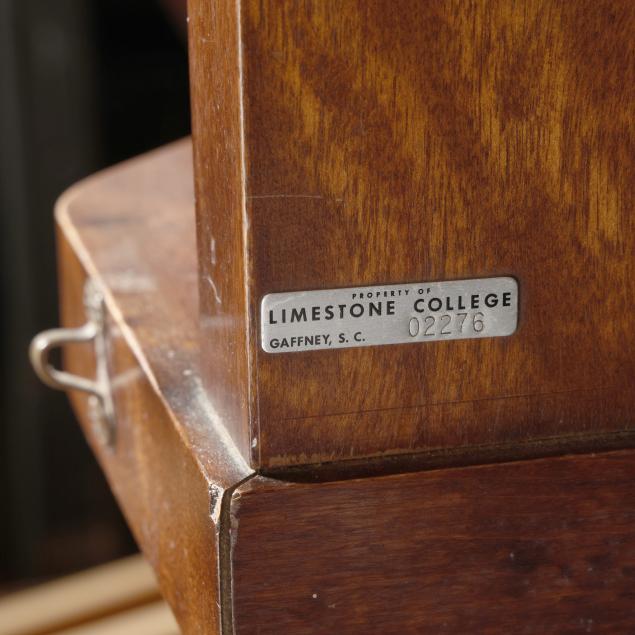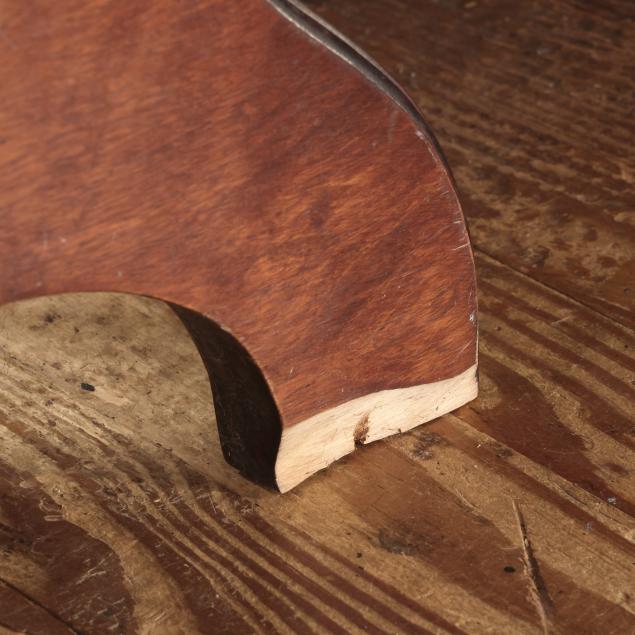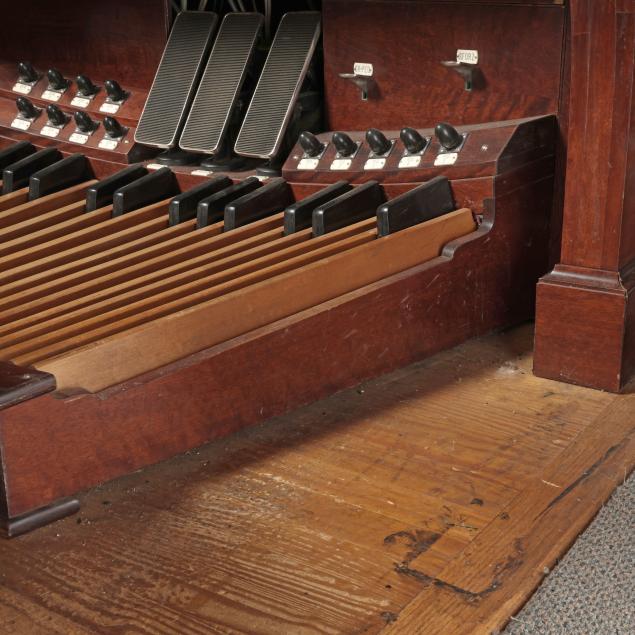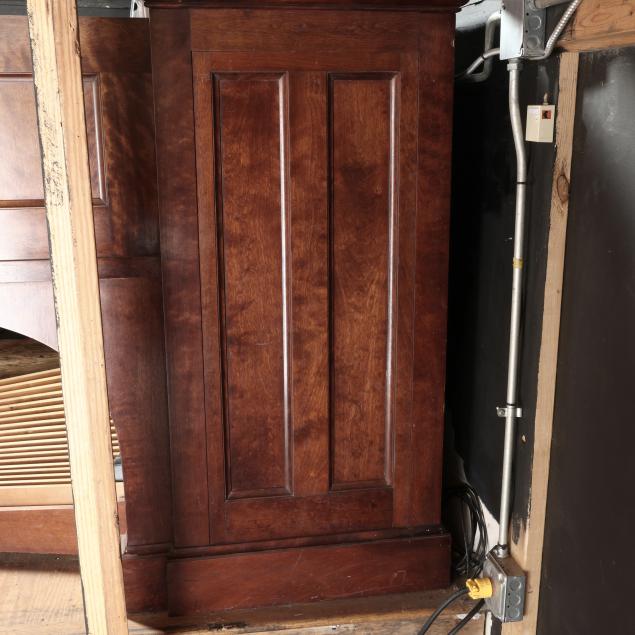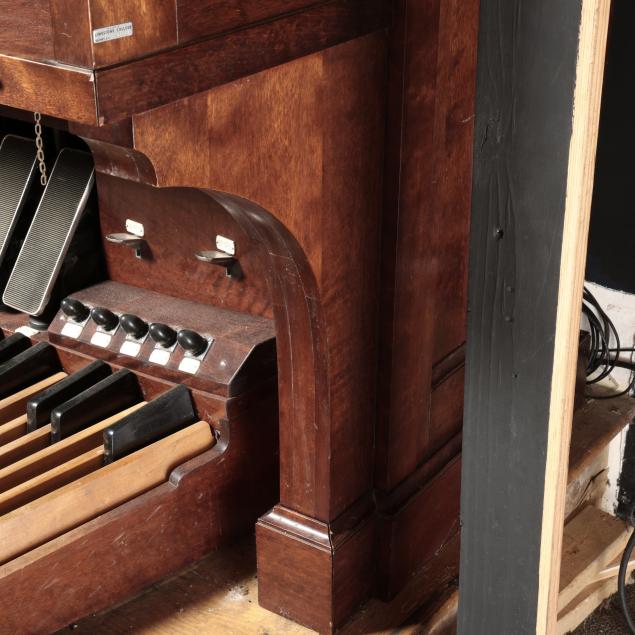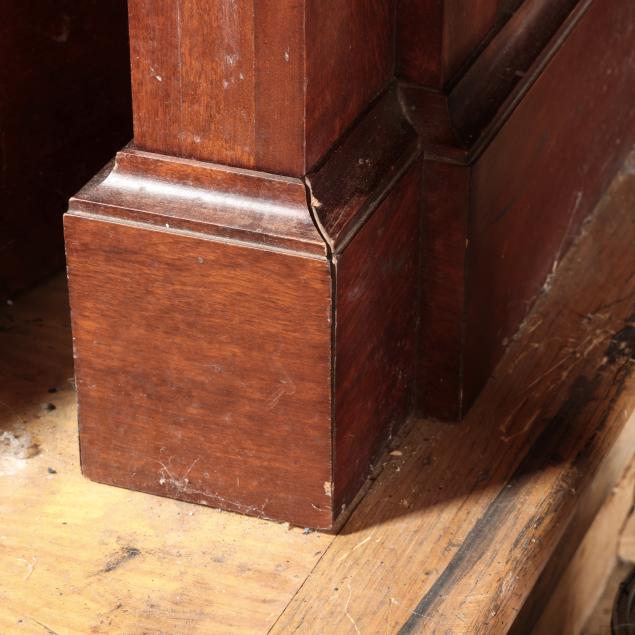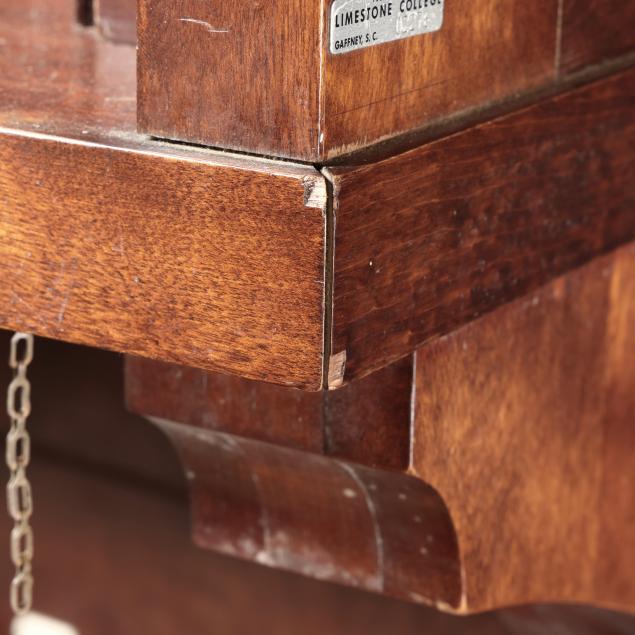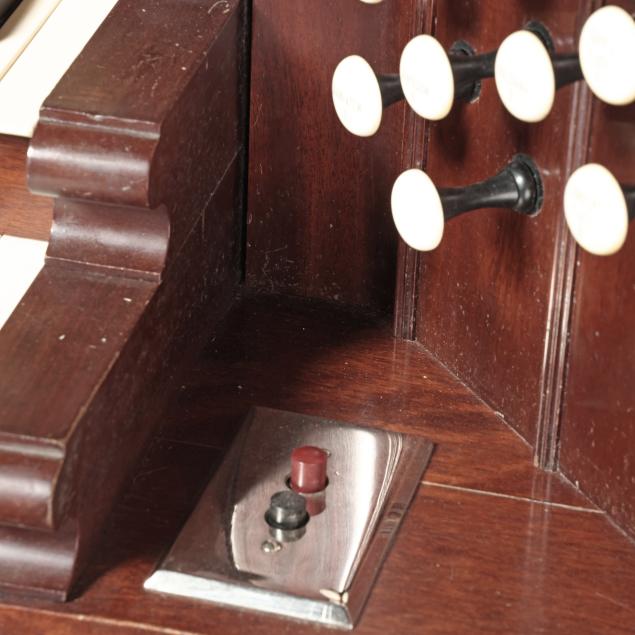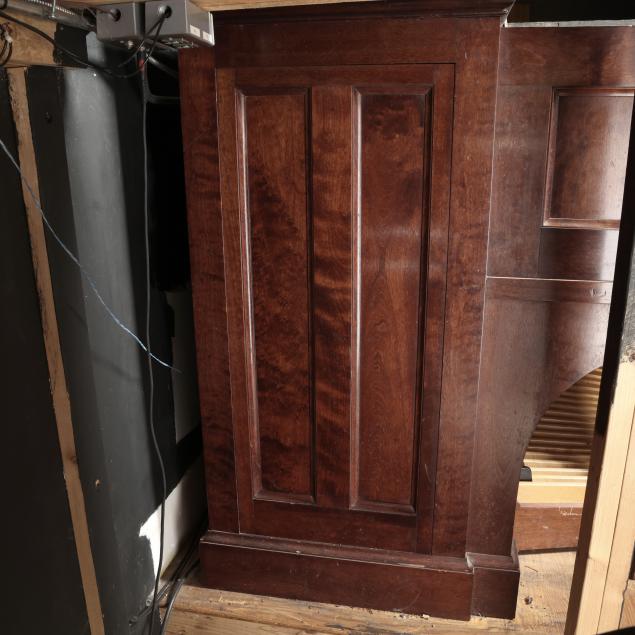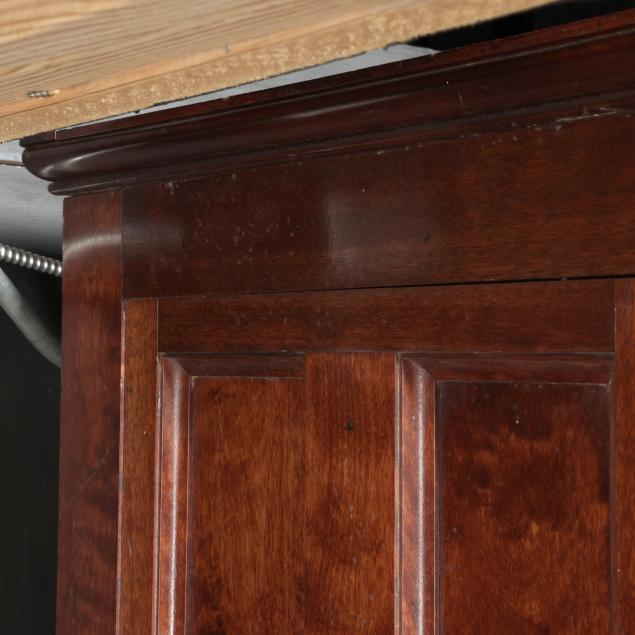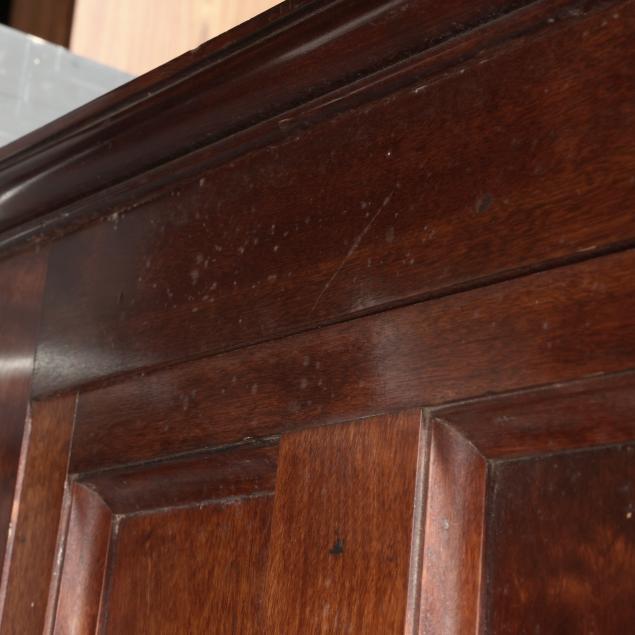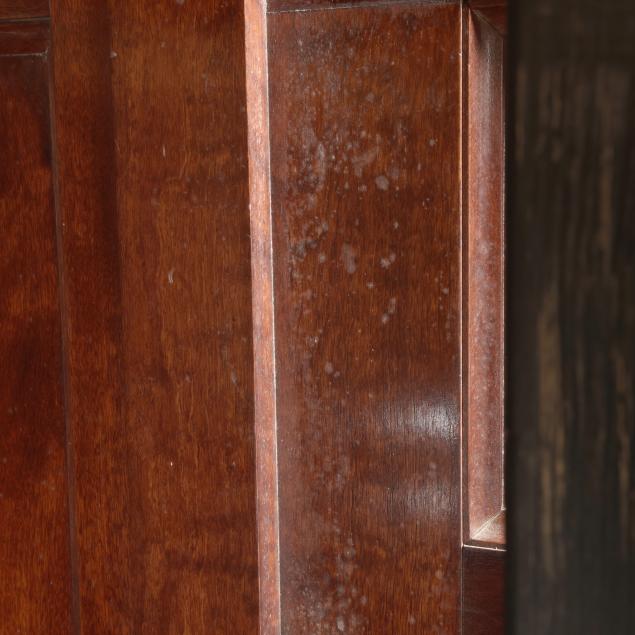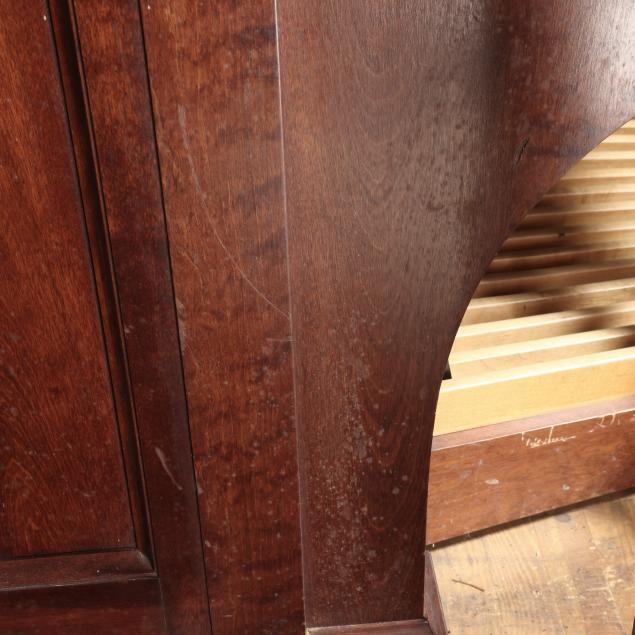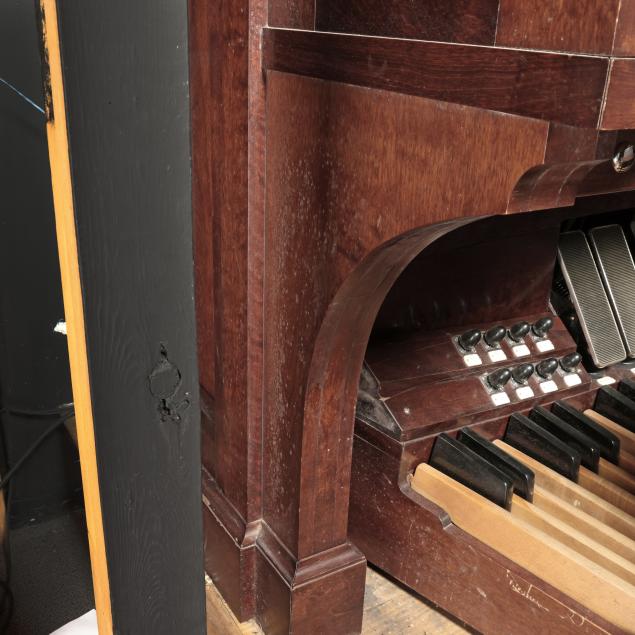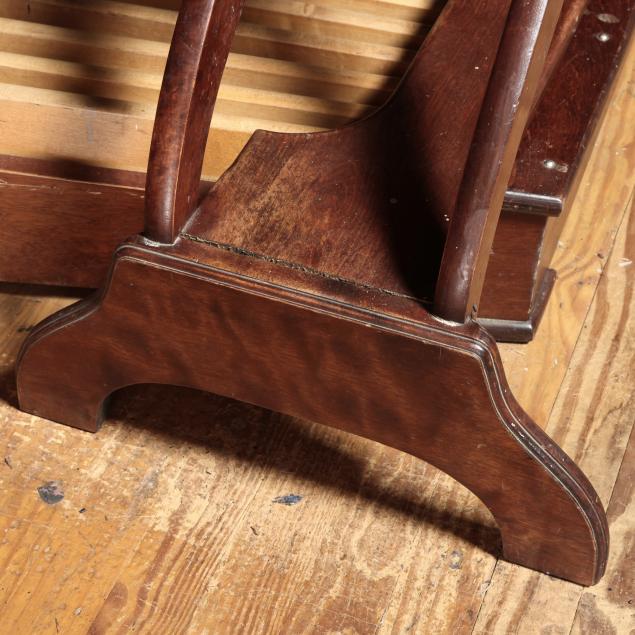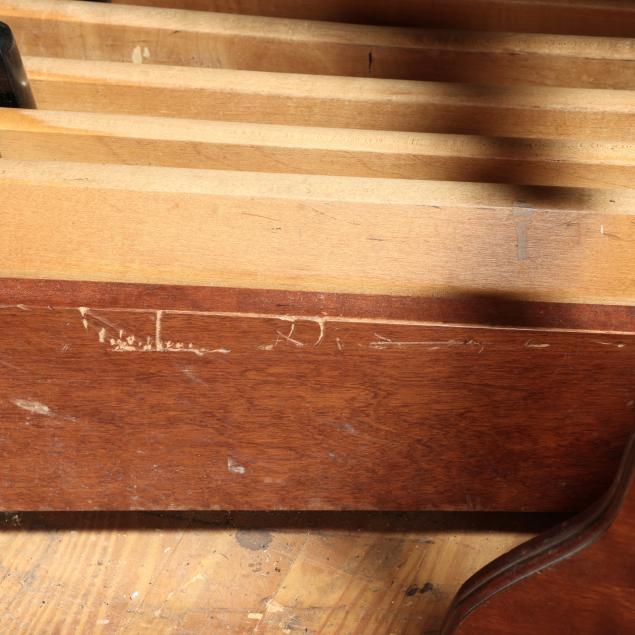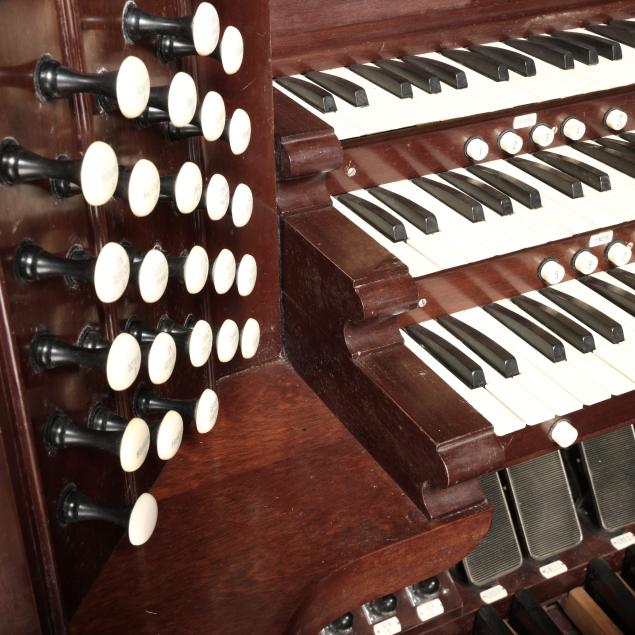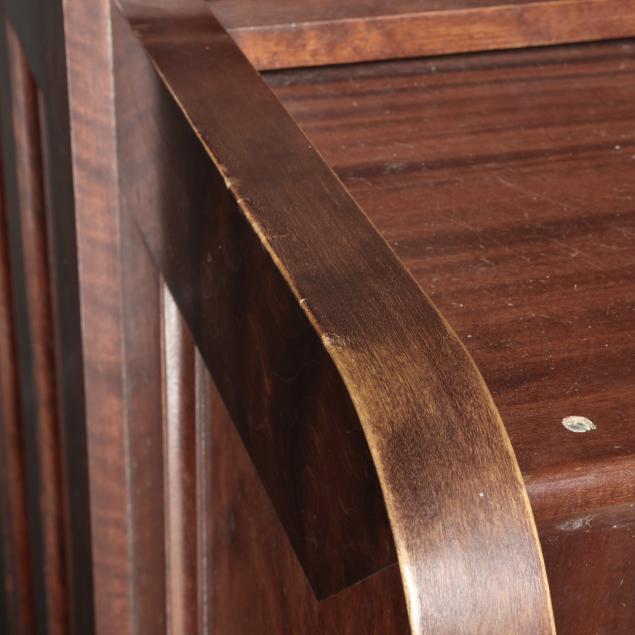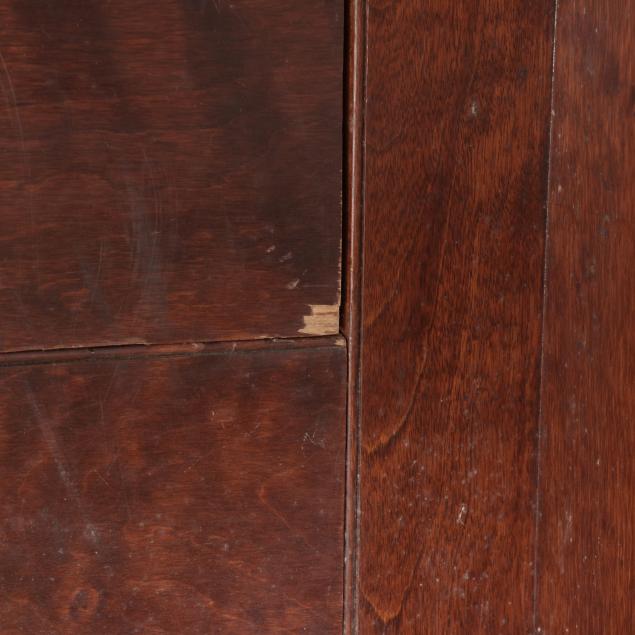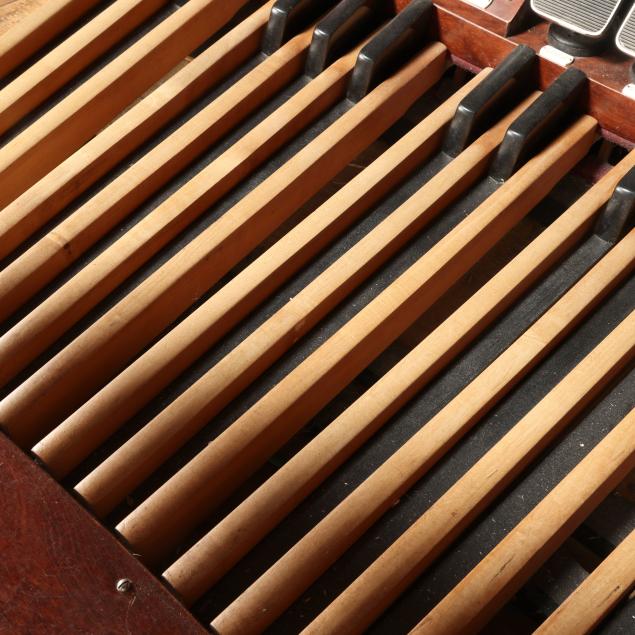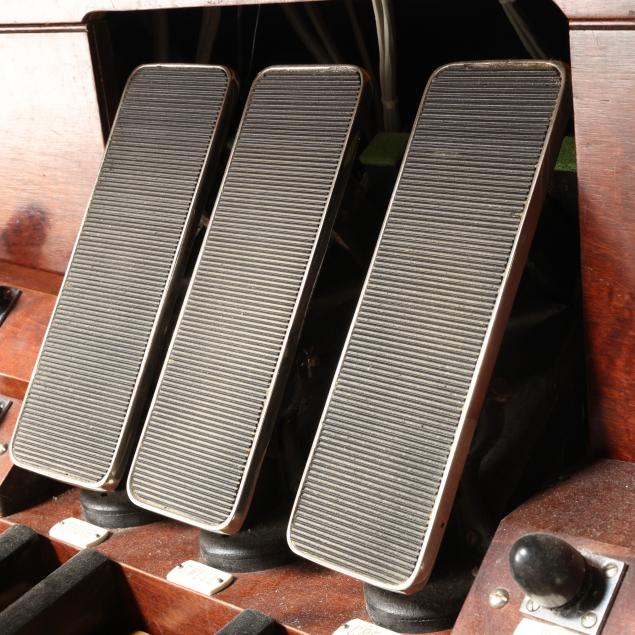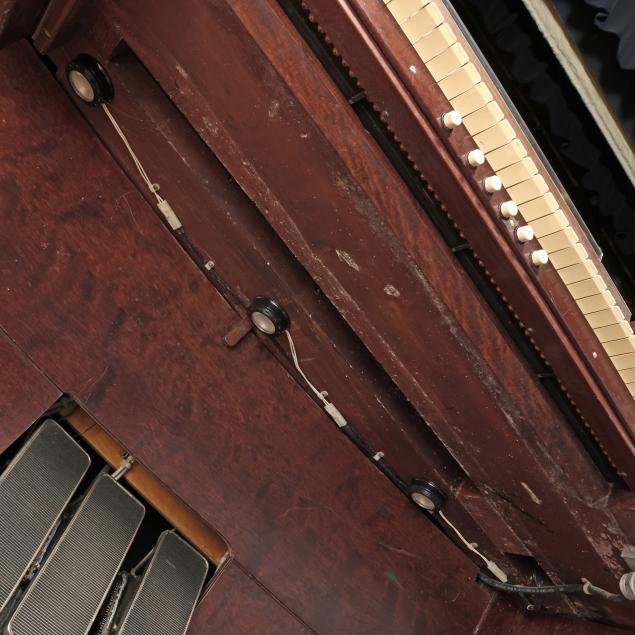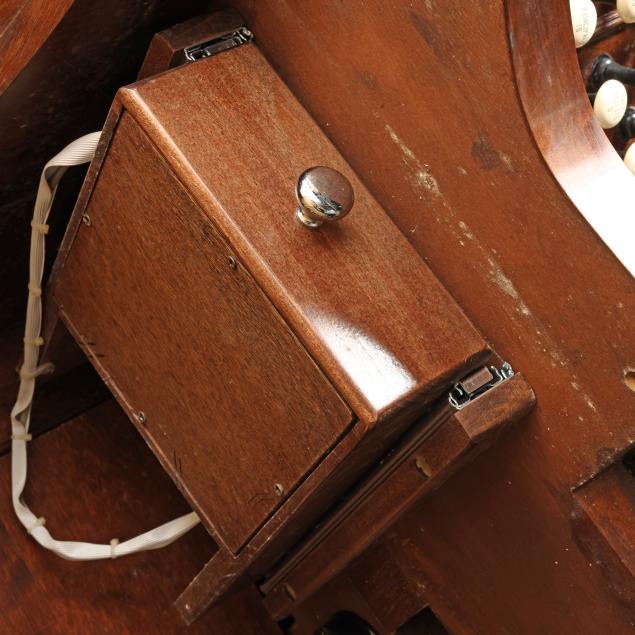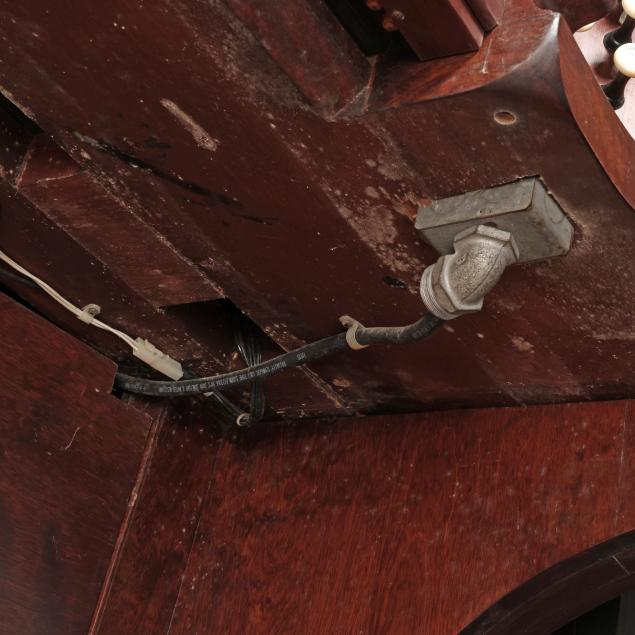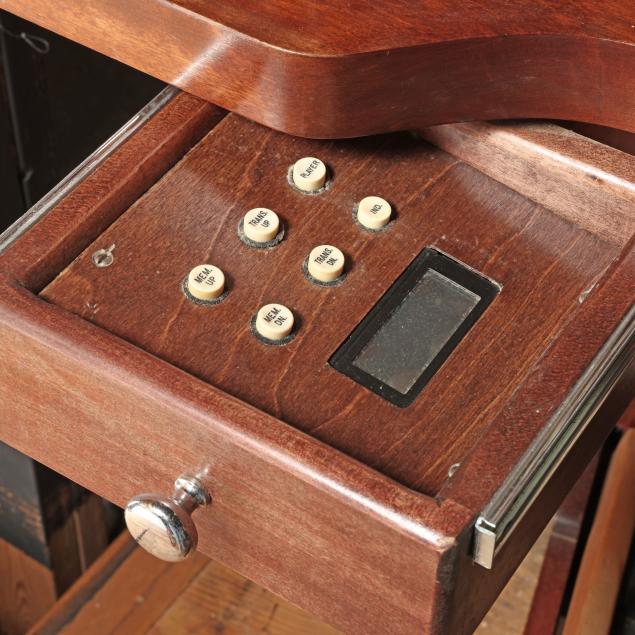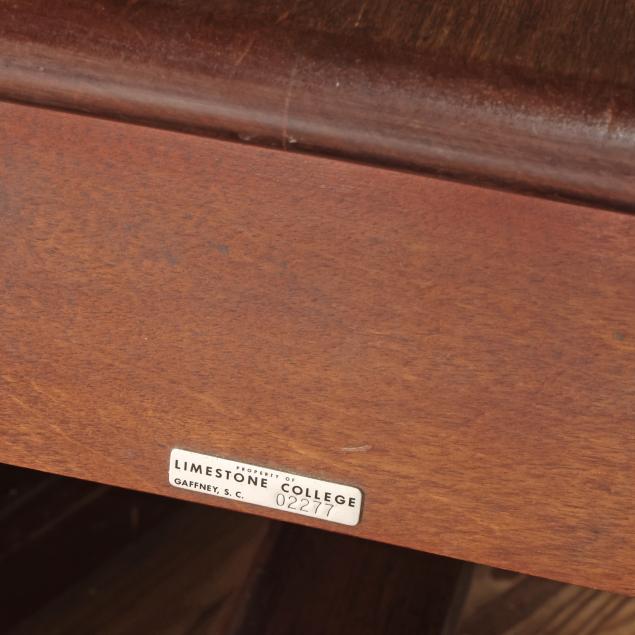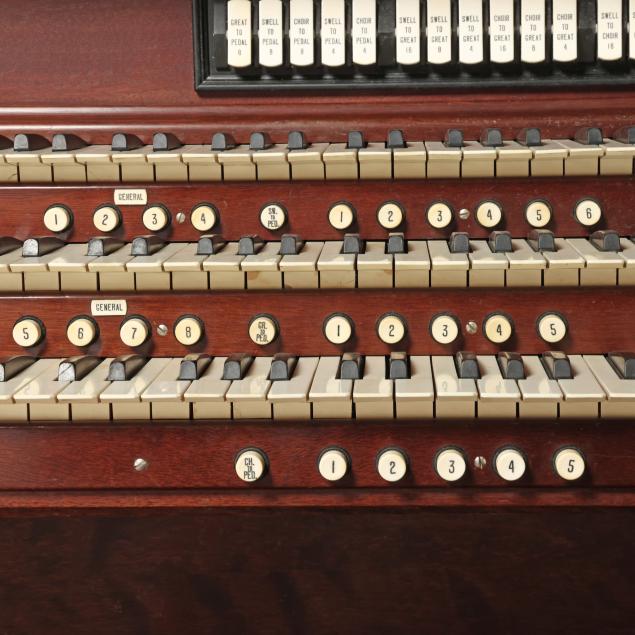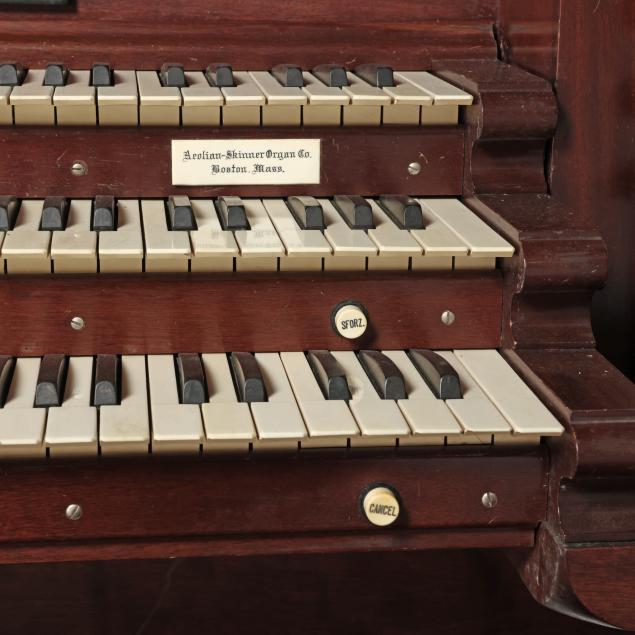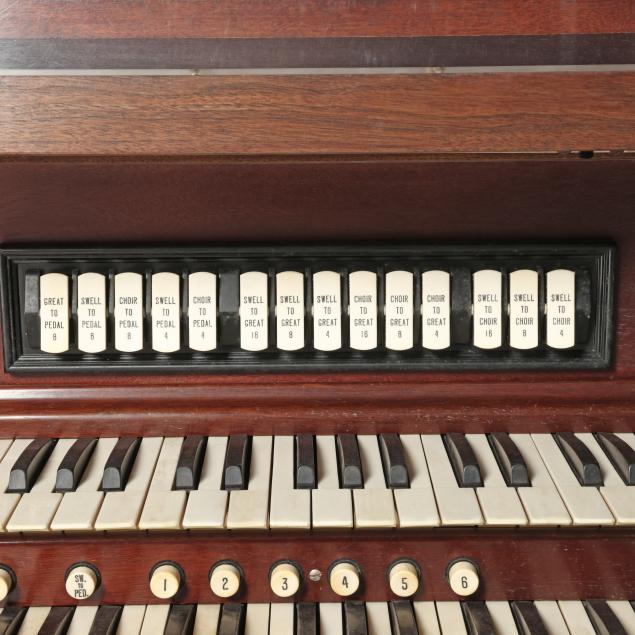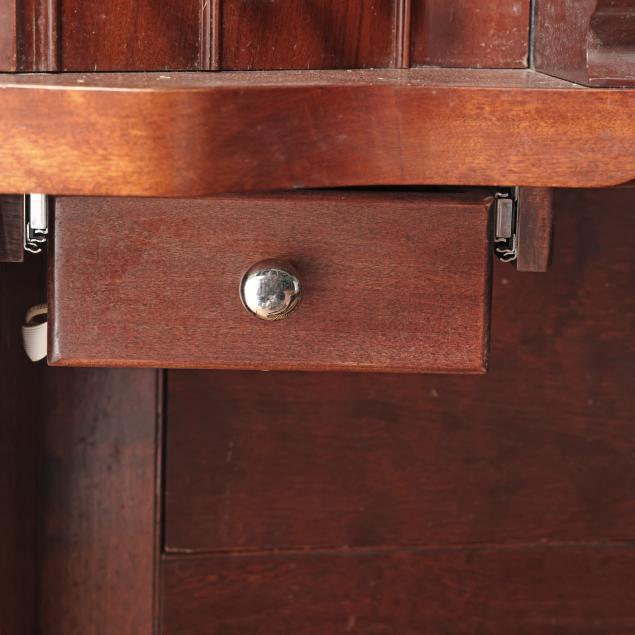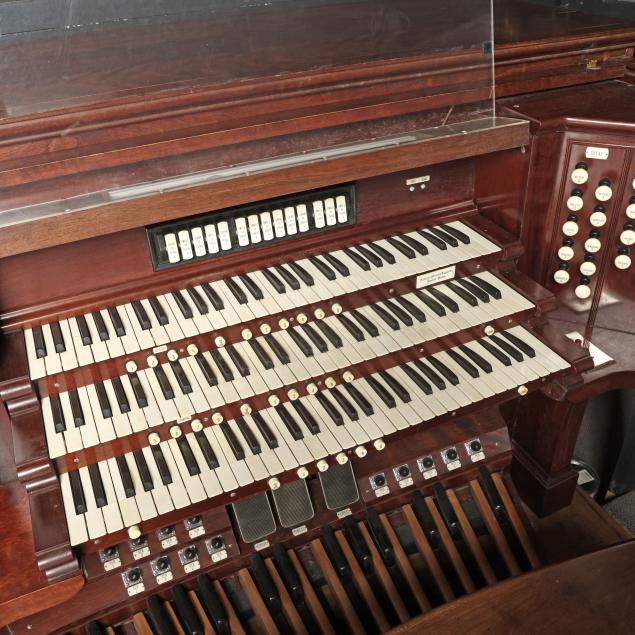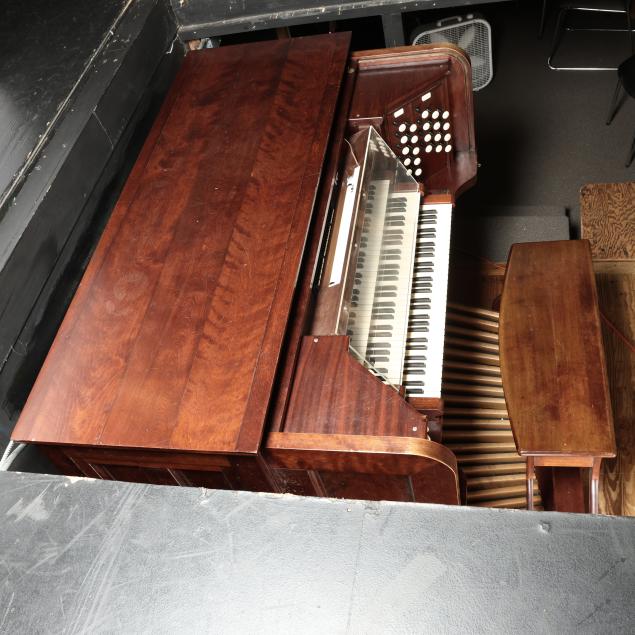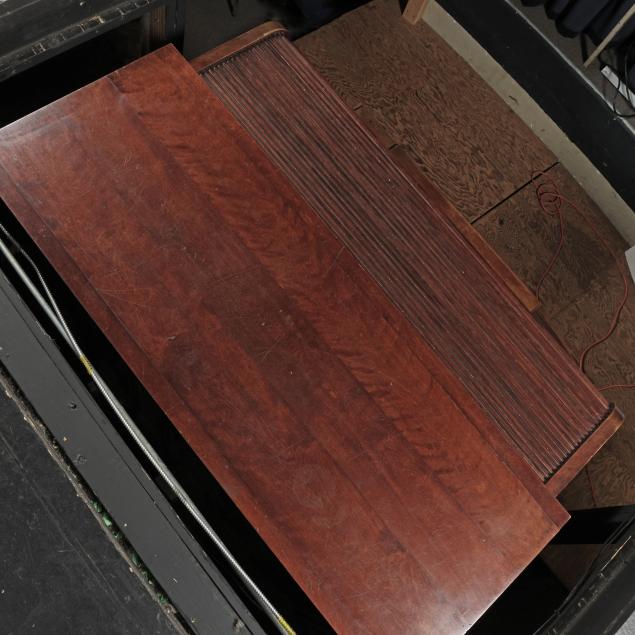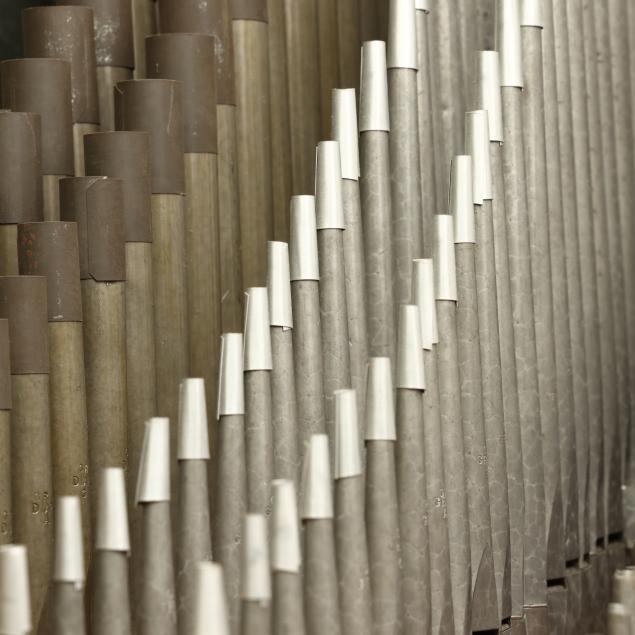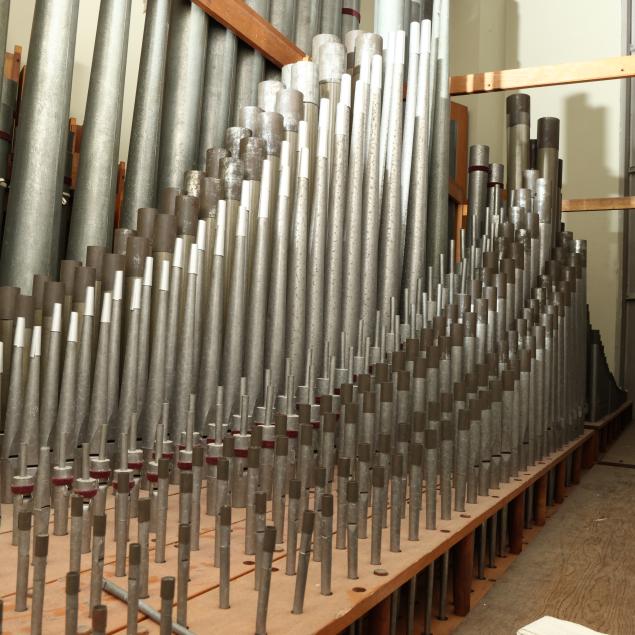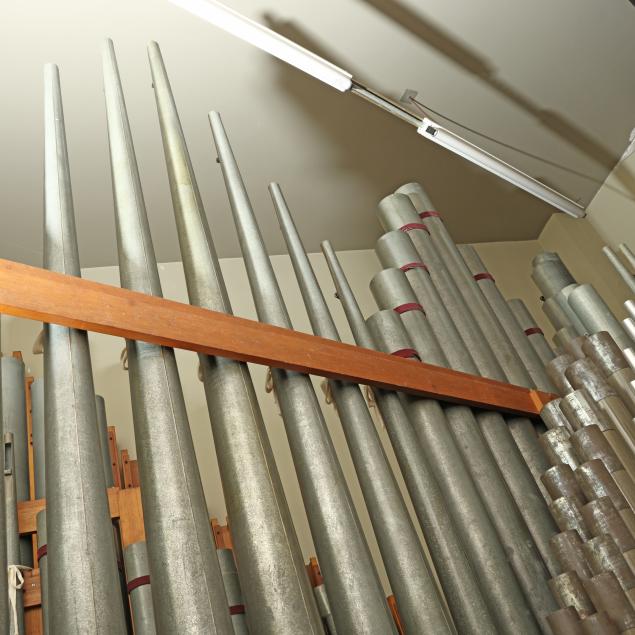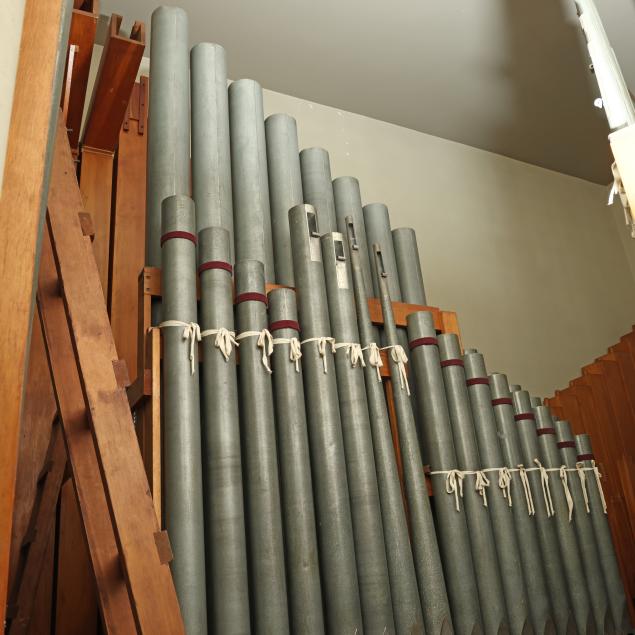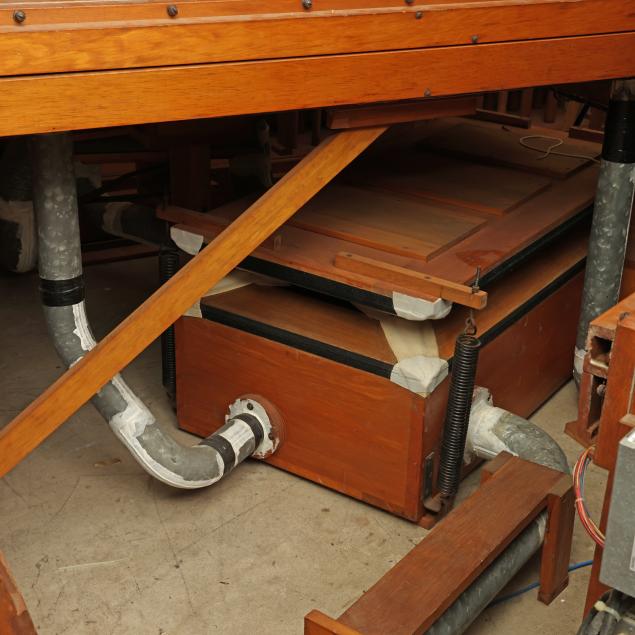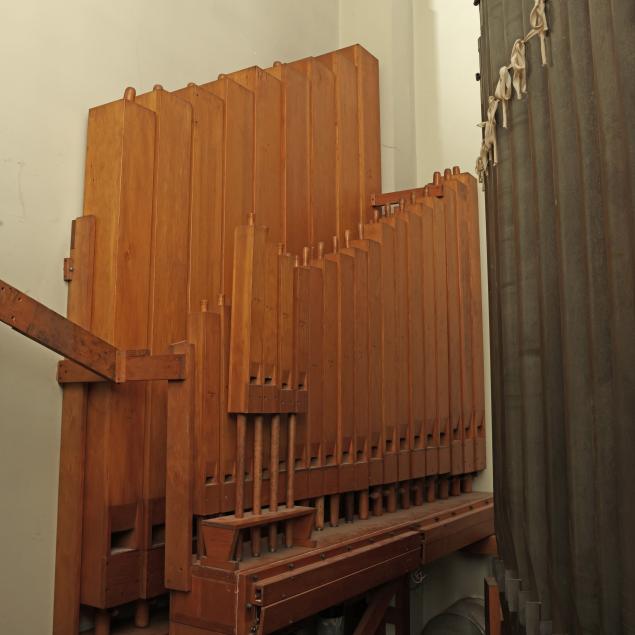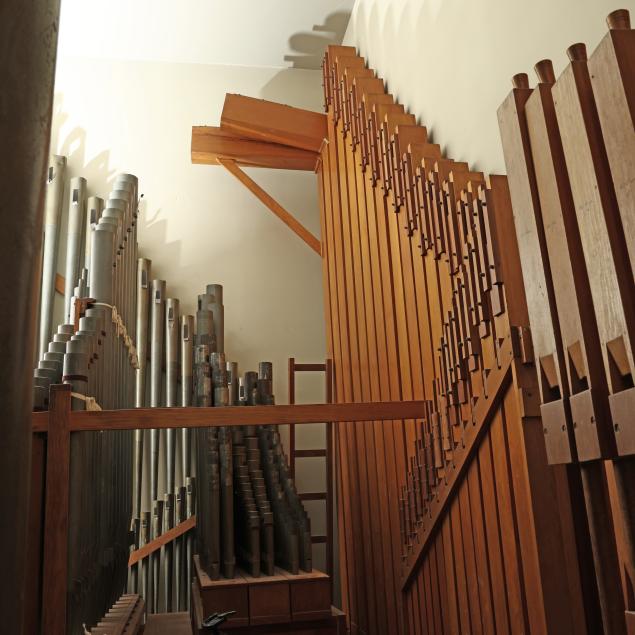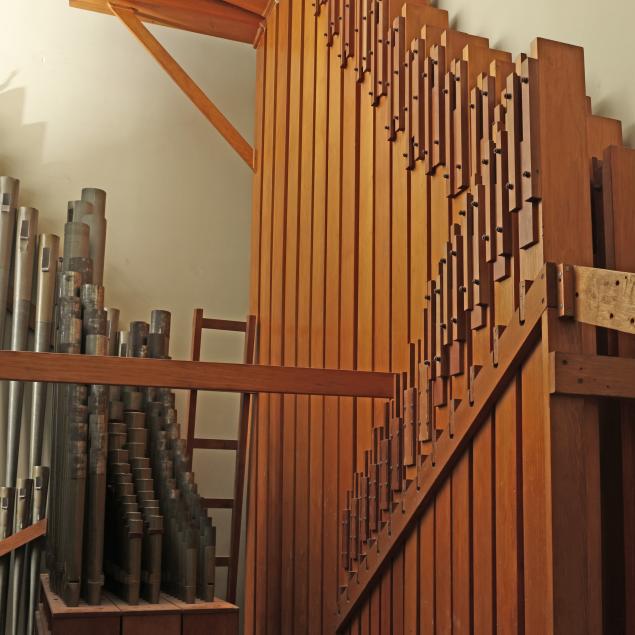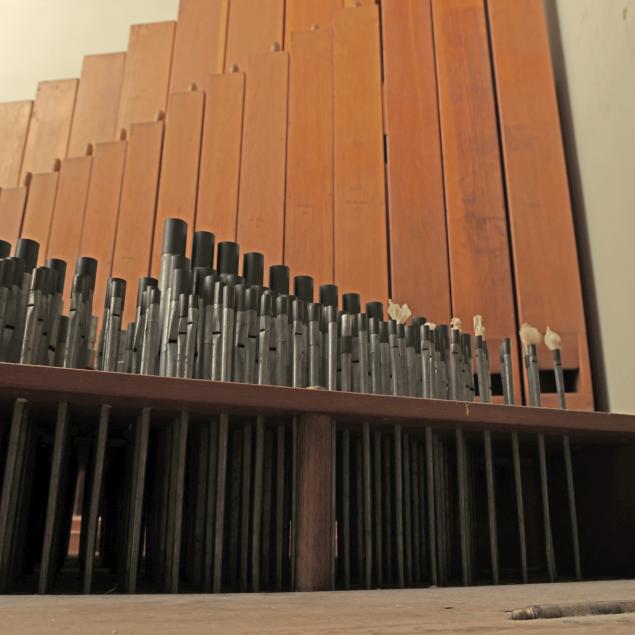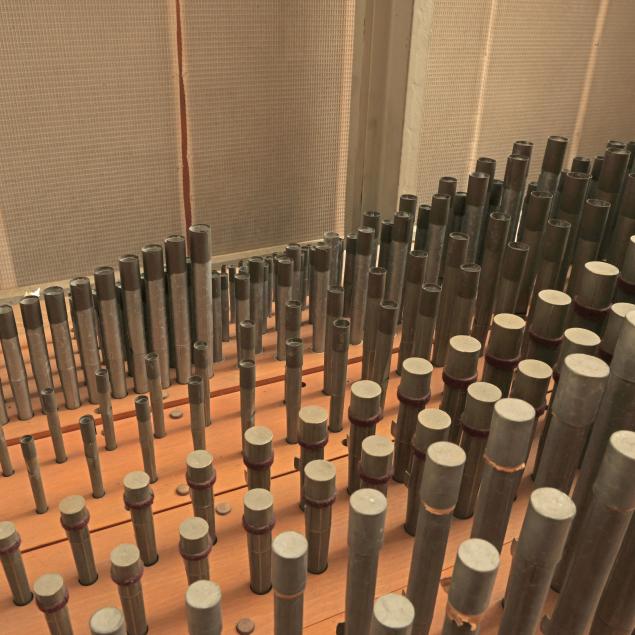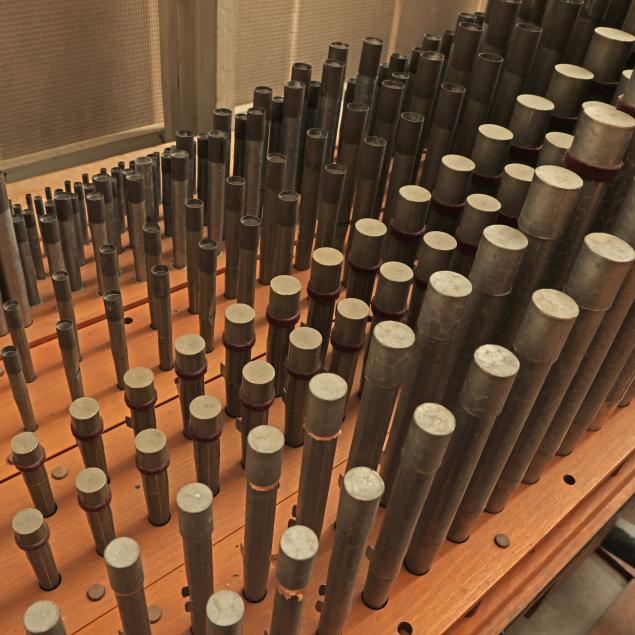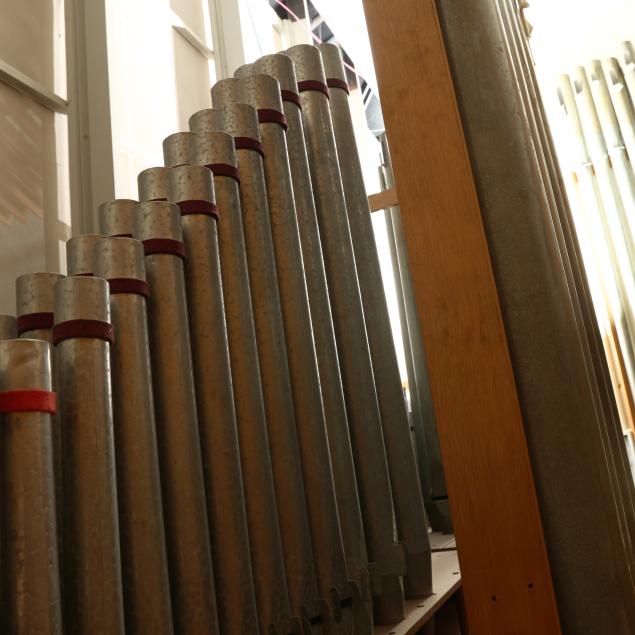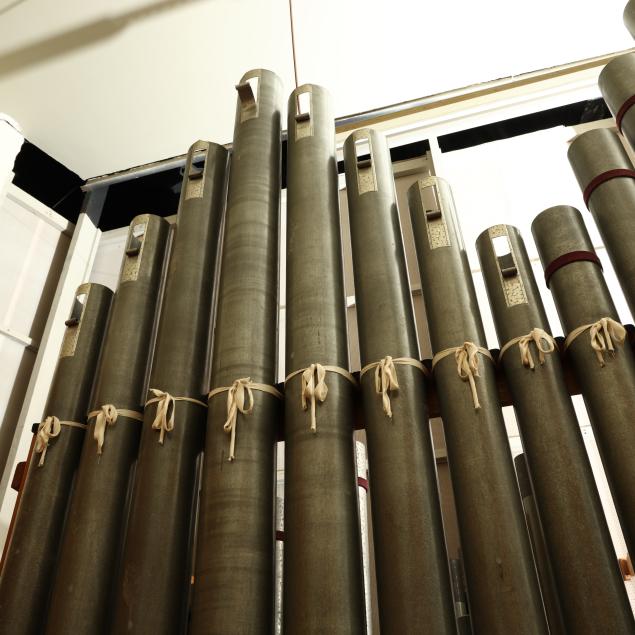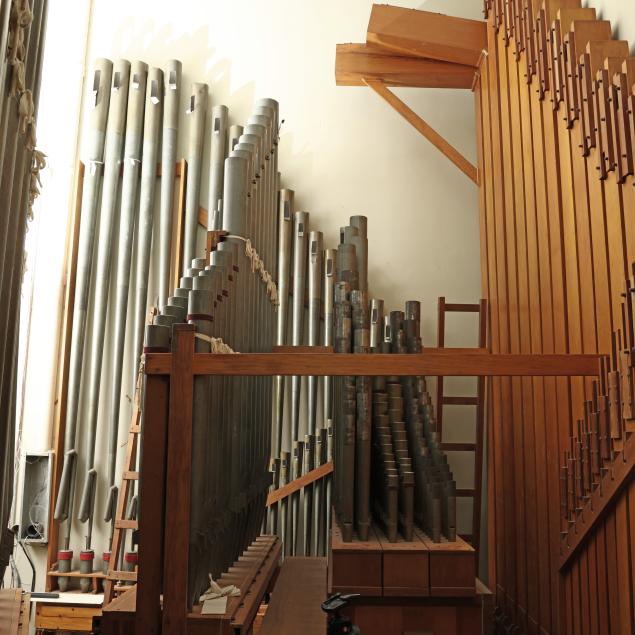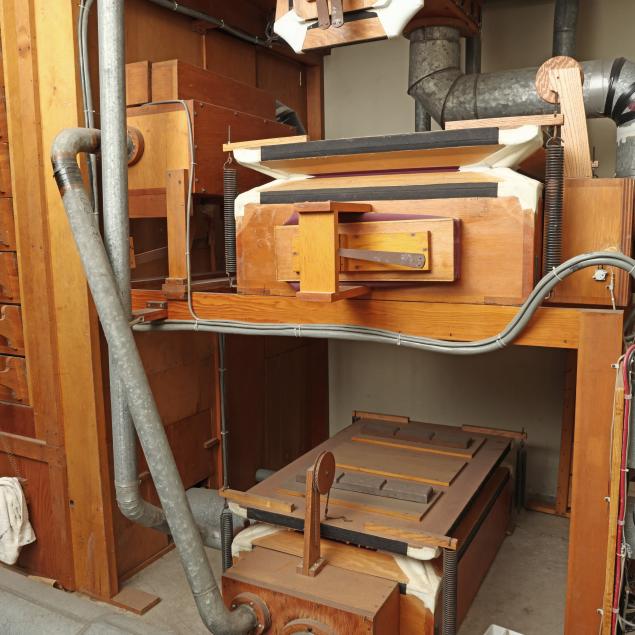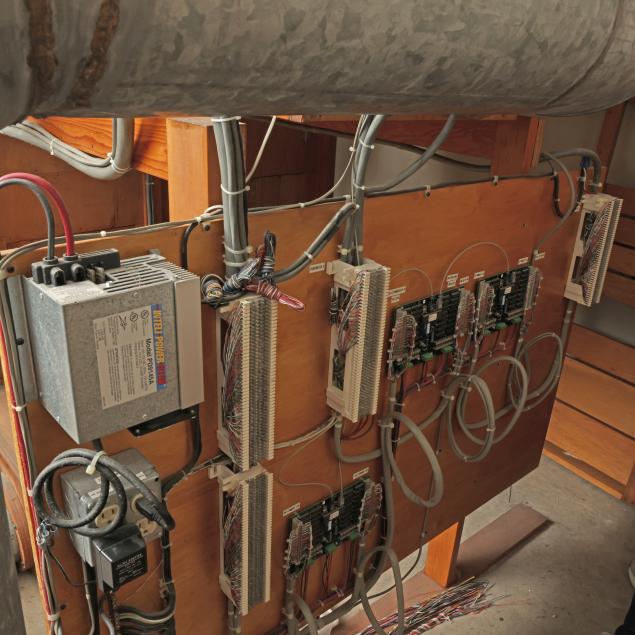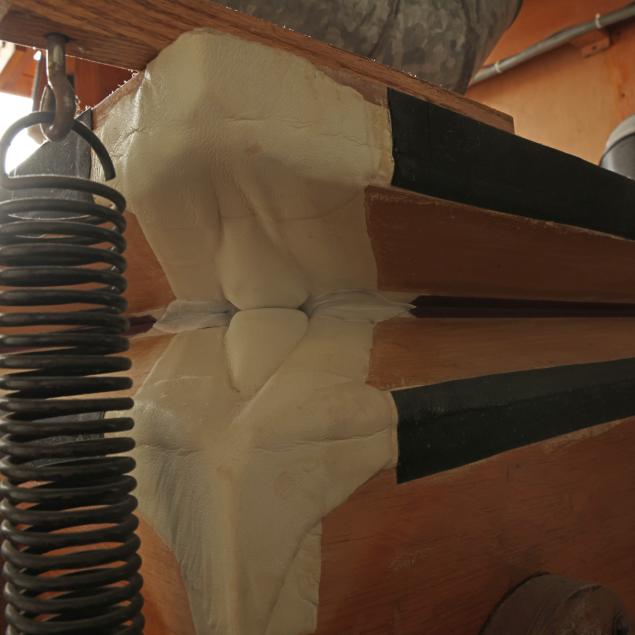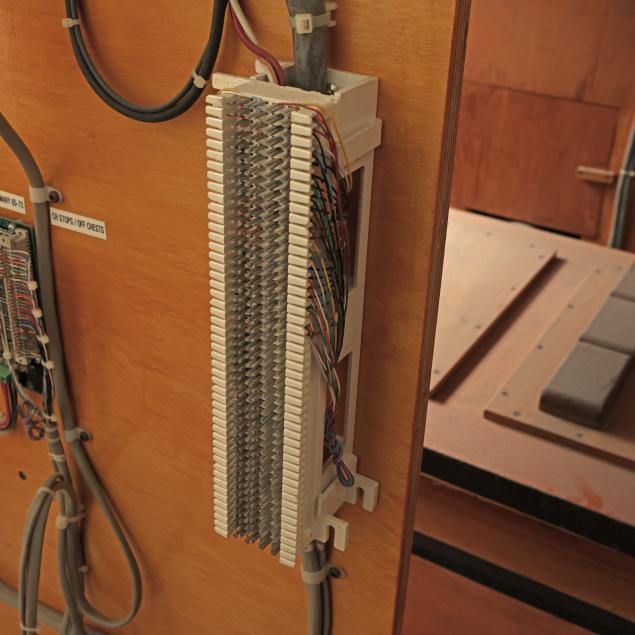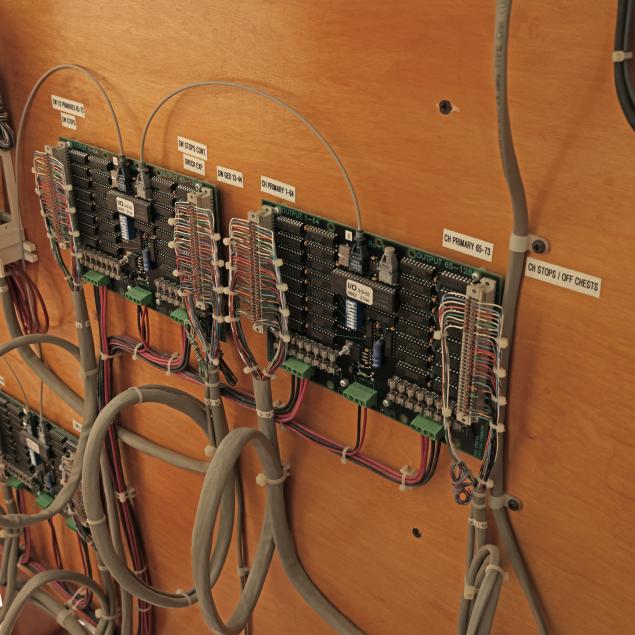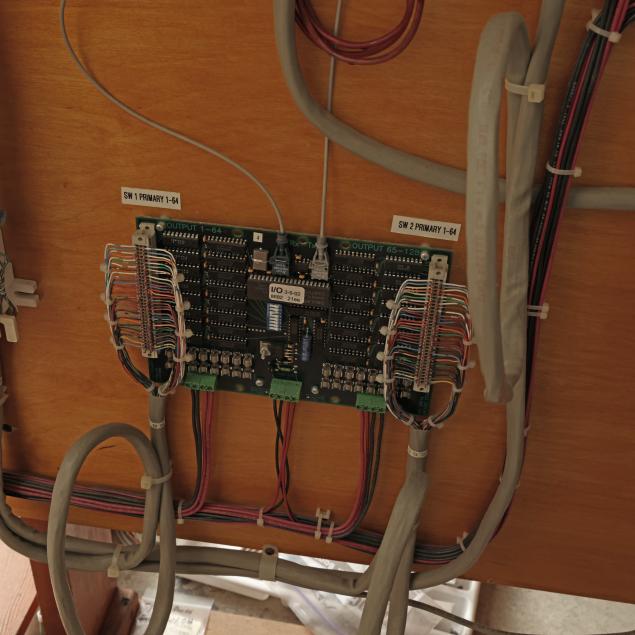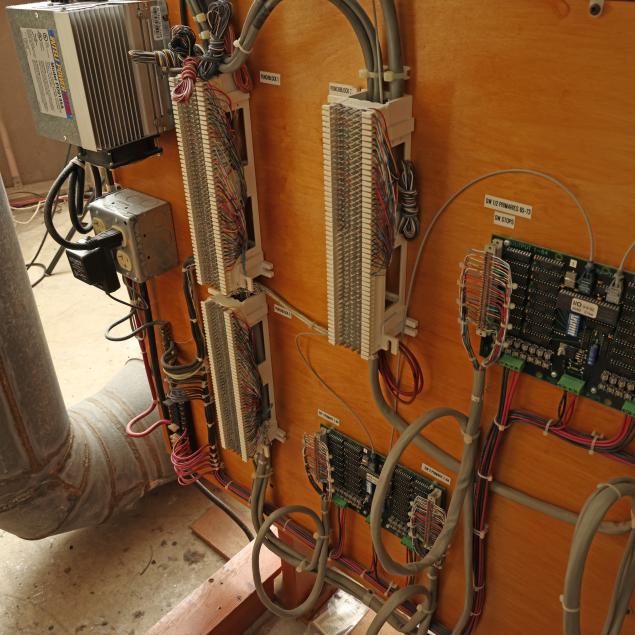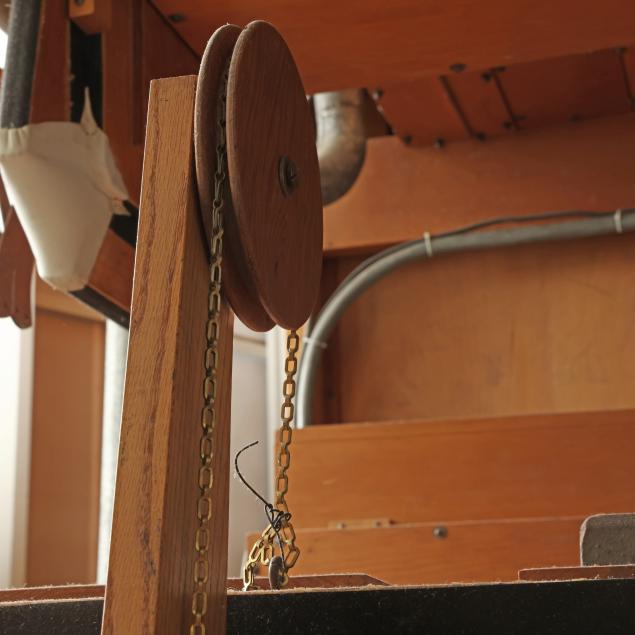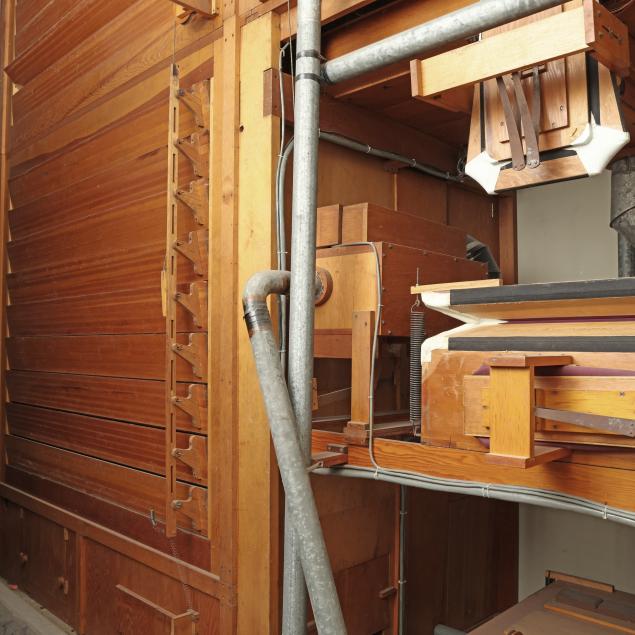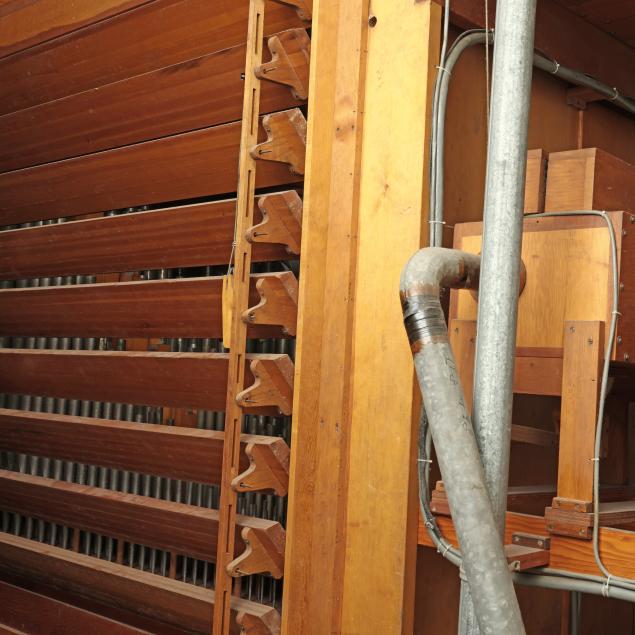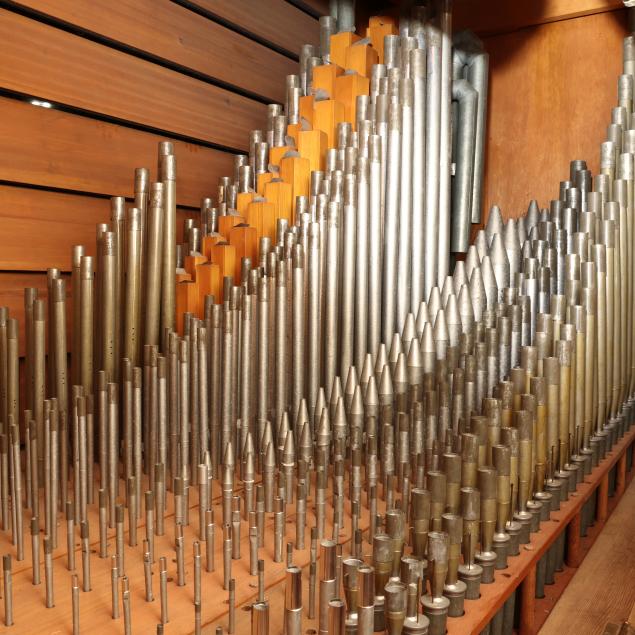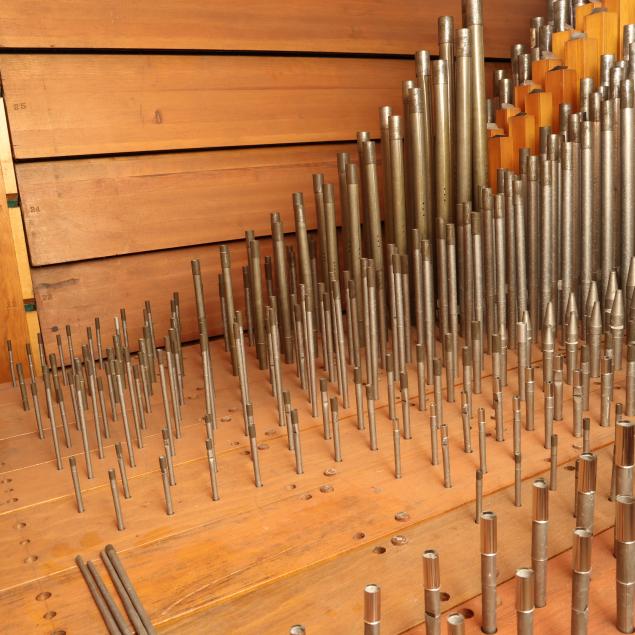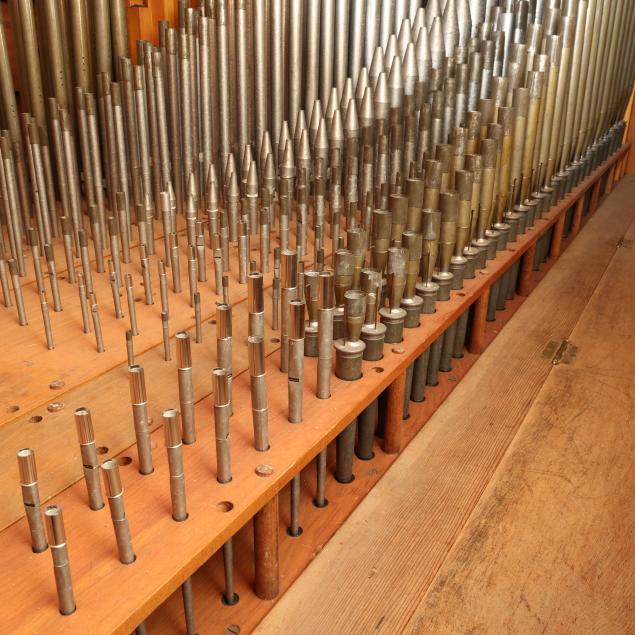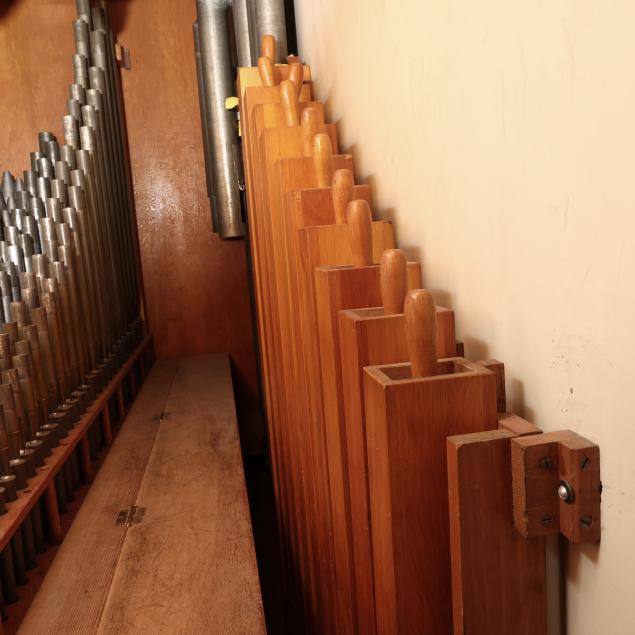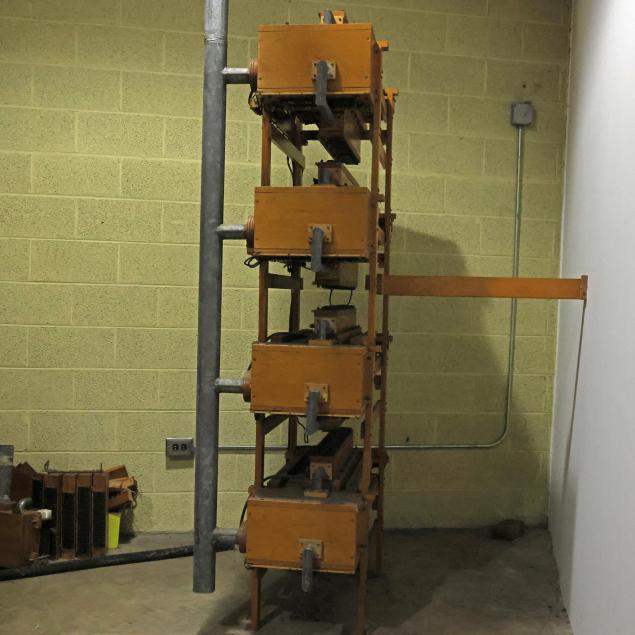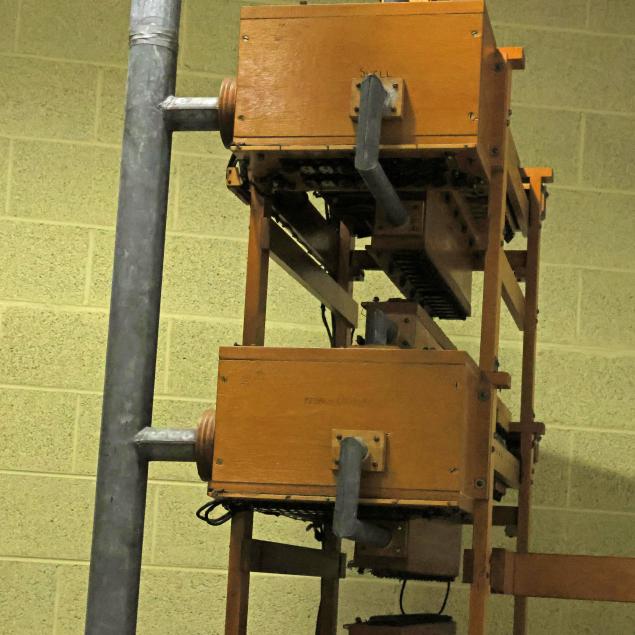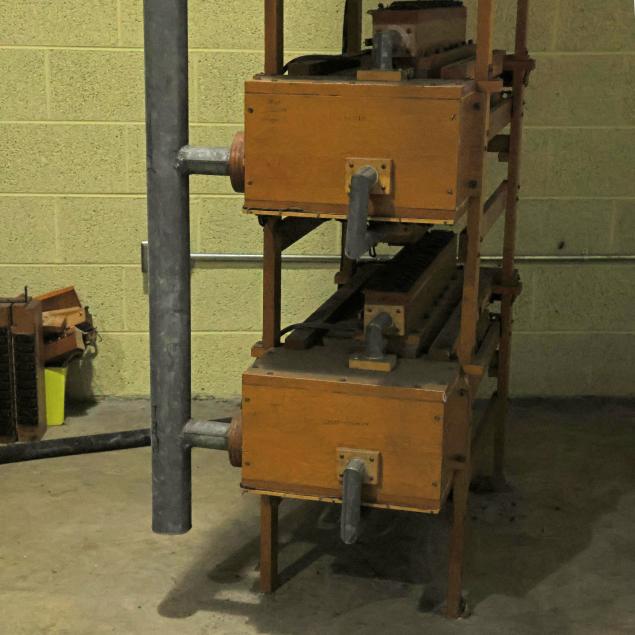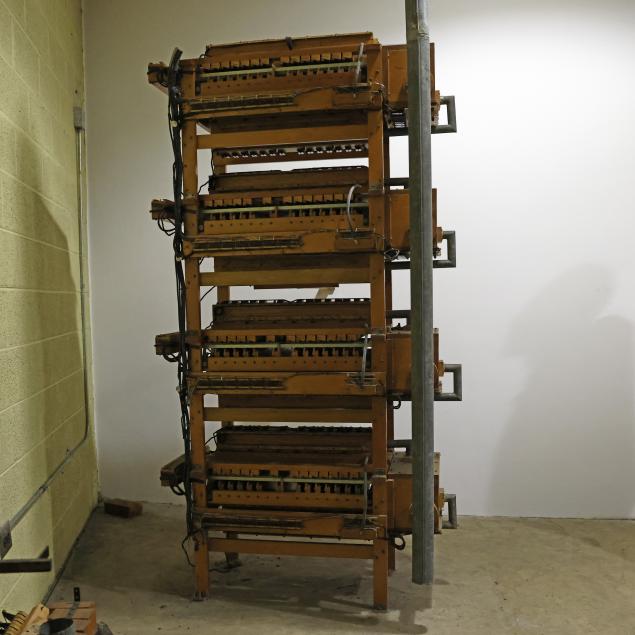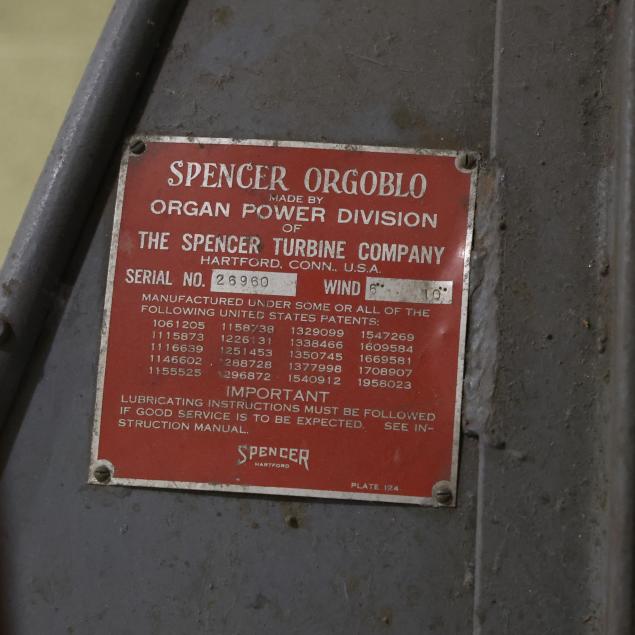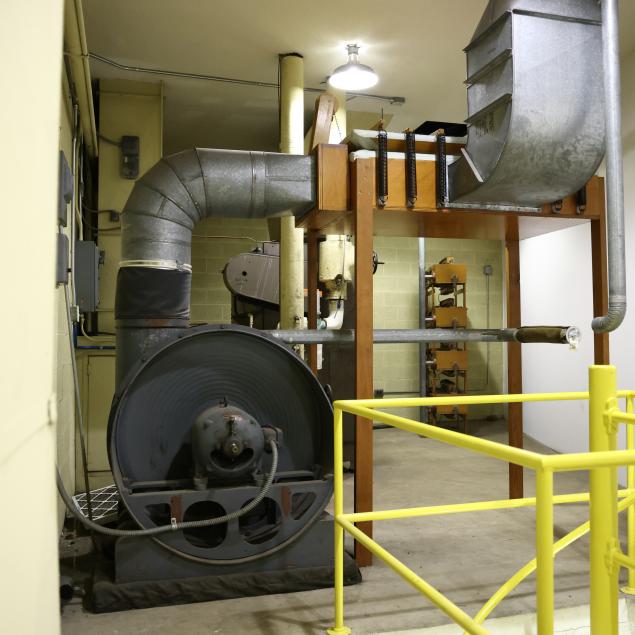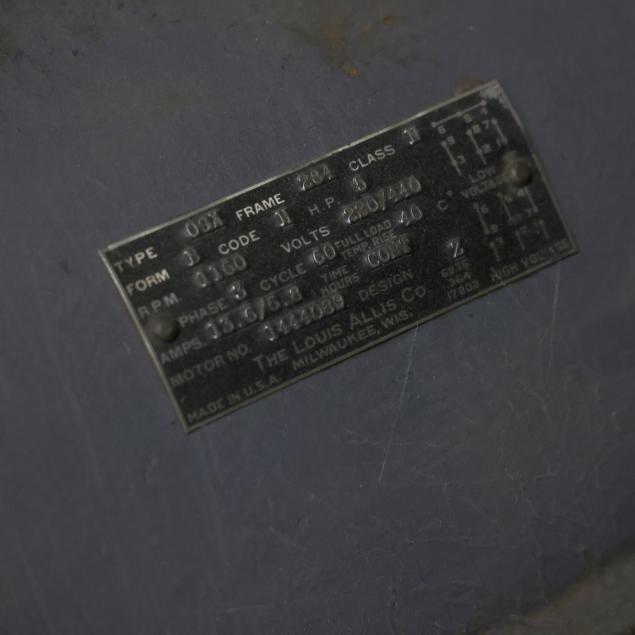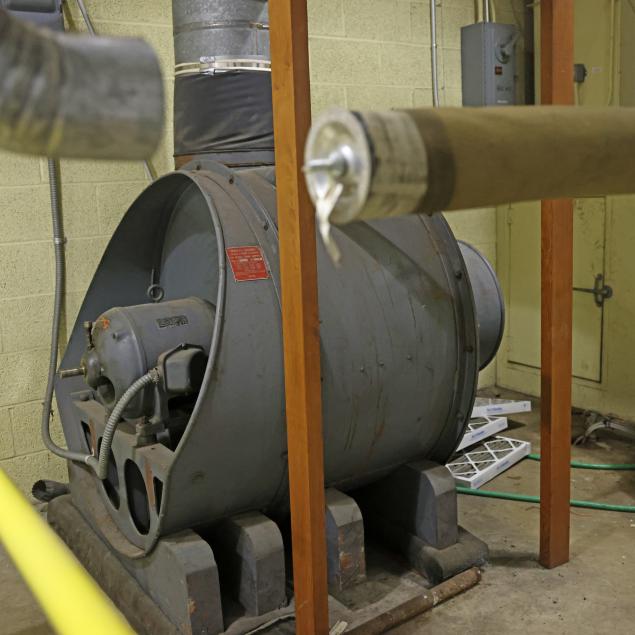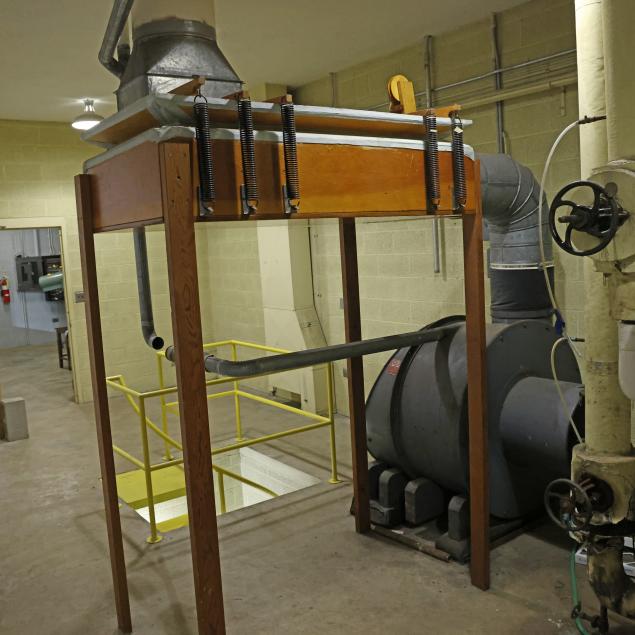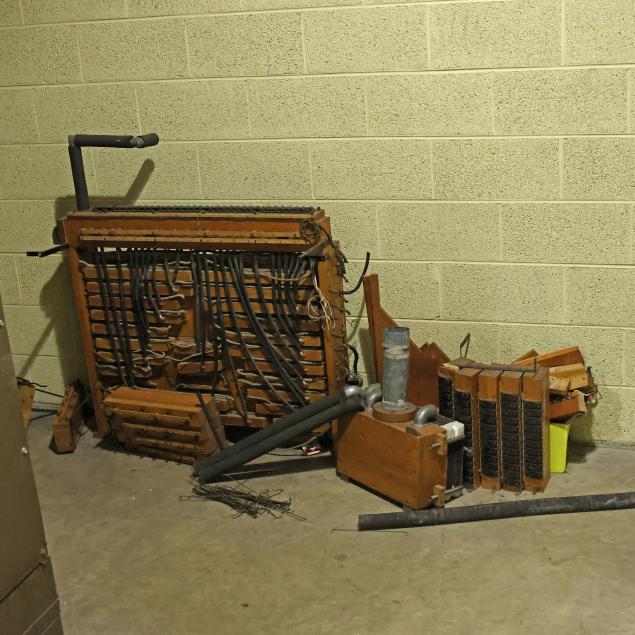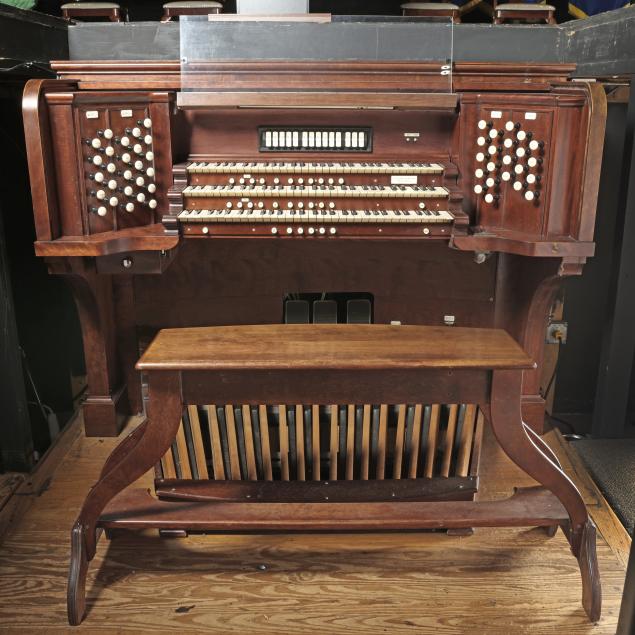
Lot 5083
The Limestone University Aeolian-Skinner Organ Co. Inc. Pipe Organ, Opus 1087
Explore more items like this one.
Visit our Musical Instruments Department Musical InstrumentsLot Details & Additional Photographs
An impressive instrument constructed in 1947 by Aeolian-Skinner Co., under the direction of G. Donald Harrison, this American Classical organ is installed at Limestone College's Fullerton Auditorium, comprising a Classical style mahogany veneered player console, featuring (3) manuals (keyboards), (38) stops (voices) and couplers, signed “Aeolian-Skinner Organ Co./ Boston, Mass.” near the upper manual, with (40) ranks (groups of pipes) for a total of 2,459 pipes.
Player console case dimensions 52 1/2 x 43 x 69 1/2 in.; pedal case dimensions 15 x 53 x 35 1/4 in.; artist bench 25 3/4 x 51 x 18 in.
From the Historic Collection of Limestone University, Gaffney, South Carolina
Limestone College, now Limestone University, was founded in 1845 in Gaffney, South Carolina, by English-born Baptist minister Dr. Thomas Curtis and his son William. Originally established as the Limestone Springs Female High School, it was among the first women’s colleges in the nation and the very first in the state. The institution found its early roots in a former resort hotel near healing springs, later struggling due to the Civil War and Reconstruction. It revived in 1881 as the Cooper‑Limestone Institute, thanks to benefaction from industrialist Peter Cooper, and adopted the name Limestone College.
Ernest Martin Skinner (1866-1960) began his own organ firm, Skinner Organ Co., in Boston in the early 20th century, and is credited with creating a unique American type of pipe organ that utilized electro-pneumatic technology with fully adjustable combination pistons and combination actions, together with several imitative and evocative stops which yielded popular sounds of the time including voices such as the English horn, French horn, flauto mirabilis, corno di bassetto, and Erzähler.
Ernest was born into a musical household, and his introduction to organs began as a boy in Taunton, Massachusetts, where one of his first jobs was an organ bellows pumper at a Baptist church. In Reading, Massachusetts he was hired as a shop-boy for organ builder George H. Ryder, and later in Boston as a tuner in for the more prominent organ firm of George Hutchings. Further enhancing his study, Skinner traveled to England and met with Henry Willis, the well known organ builder of the Victorian era. Also traveling to France, he met Louis Vierne, the blind organist at Notre Dame in Paris.
After a successful start to his Skinner company, creating many important organs for various clients, his ability to navigate business arrangements with his managers became more difficult. However, these arrangements allowed for Skinner to focus on the artistry and technical aspects, while business partners handled the commercial side of the business.
G. Donald Harrison came to America to work for Skinner Organ Company of Boston in 1927, largely through the relationship between Ernest Skinner and Henry Willis III. Harrison would remain at Aeolian-Skinner Organ Company for the next 29 years. During the Great Depression the company found itself restructuring again with Aeolian Organ Co. due to economic pressures of the time. In 1933, Harrison became technical director of the company, in charge of the mechanical and tonal design of all instruments, and in 1940 he was elected president and treasurer. He continued to have a great influence on the development of voicing and tone-production throughout the industry, though some clients were more loyal to Skinner's vision. Although Opus 1087 was built in the 1940s during Harrison's leadership, its higher number of pipes per rank in the swell and choir organ, the inclusion of the Swell Flute Triangulaire, the presence of the clarinet on the choir division, and the use of a super octave coupler and double primaries, may point more toward E. M. Skinner's signature designs.
OPUS 1087:
GREAT ORGAN:
16' Quintaten 61
8' Diapason 61
8' Bourdon 61
8' Gemshorn 61
4' Octave 61
4' Rohrflöte 61
2 2/3' Twelfth 61
2' Fifteenth 61
III-IV Mixture 245
Chimes pf
CHOIR ORGAN:
8' Viola 73
8' Concert Flute 73
8' Dulciana 73
8' Unda Maris (TC) 61
4' Koppelflöte 73
2 2/3' Nazard 61
2' Piccolo 61
8' Clarinet 73
Tremolo
SWELL ORGAN:
16' Gedeckt 73
8' Geigen Diapason 73
8' Chimney Flute 73
8' Viole de Gambe 73
8' Viole Celeste (TC) 61
4' Octave Geigen 73
4' Flute Triangulaire 73
III Plein Jeu 183
16' Contra Hautbois 73
8' Trompette 73
8' Oboe 73
4' Clarion 73
Tremolo
PEDAL ORGAN:
16' Principal 32
16' Bourdon 32
16' Gedeckt SW
8' Octave 32
8' Gedeckt Pommer 32
8' Gedeckt SW
4' Nachthorn 32
16' Posaune 32
8' Trumpet 12
Player console and pedal case: surface scratches to the veneers with areas of surface spotting; a few small veneer losses and nicks to the console case edges with areas of surface wear/rubbing along corners; some fading/discoloration to the veneers.
Bench: Area of wood loss to one bench foot (forward facing right if sitting on the bench).
Pipes: Some with areas of spotting and dust accretions to exterior pipes. Not all pipes examined for working order.
Please Note: This lot is located offsite in Gaffney, South Carolina. Interested buyers may contact the gallery at 919-644-1243 to arrange a preview. For this lot only, an extended pick up period of sixty (60) days post-auction is provided, ending at 5PM on November 12, 2025. Buyers are responsible for arranging collection within this timeframe and must coordinate pick up with the LLA front office.
It is the buyer's responsibility, at the buyer's cost, to secure an adequately insured qualified external contractor, acceptable to the seller, for removal and transportation of this lot. Also, removal will be subject to proof of insurance and/or bond by the buyer and agreed upon by the seller, for removal and restoration (if required). Any damage to the property during removal must be repaired immediately at the buyer's expense. Limestone University and LLA assumes no liability for any damage, injury, or costs associated with removal or transport. Failure to collect the lot within the designated period will result in forfeiture without refund. Please contact LLA in advance of bidding with any questions.
